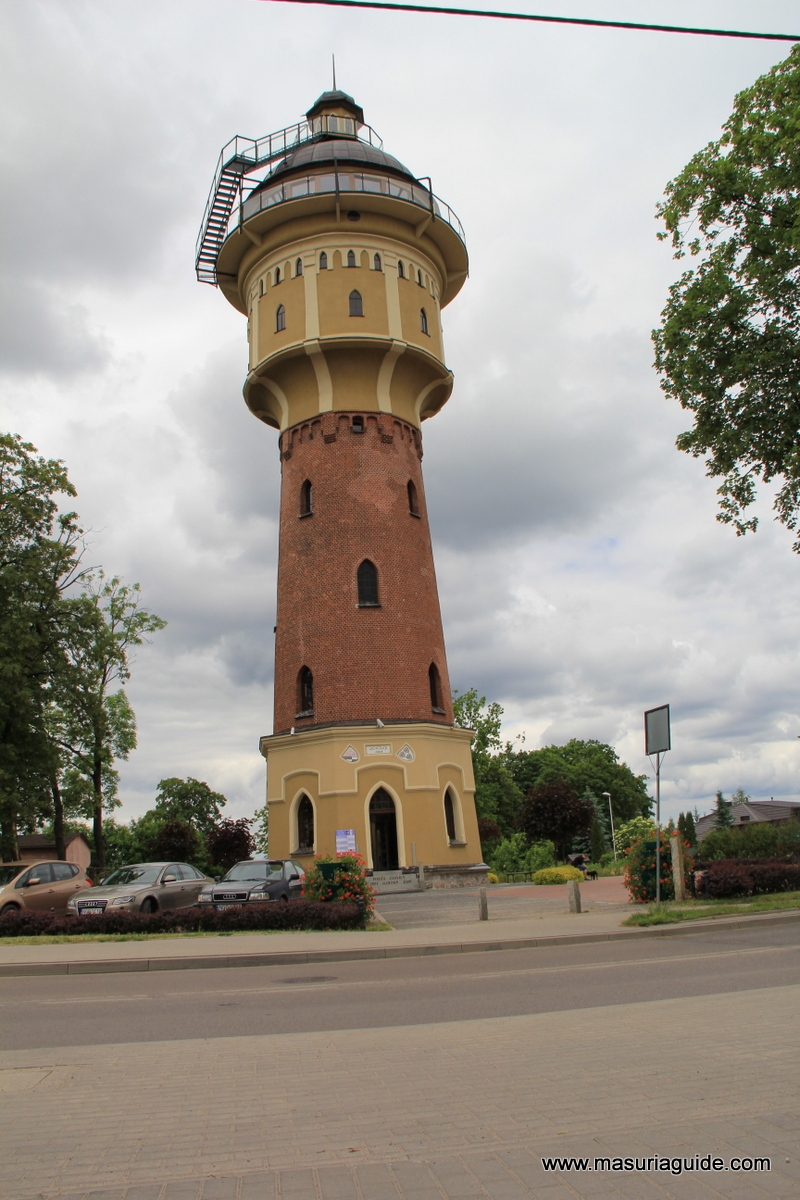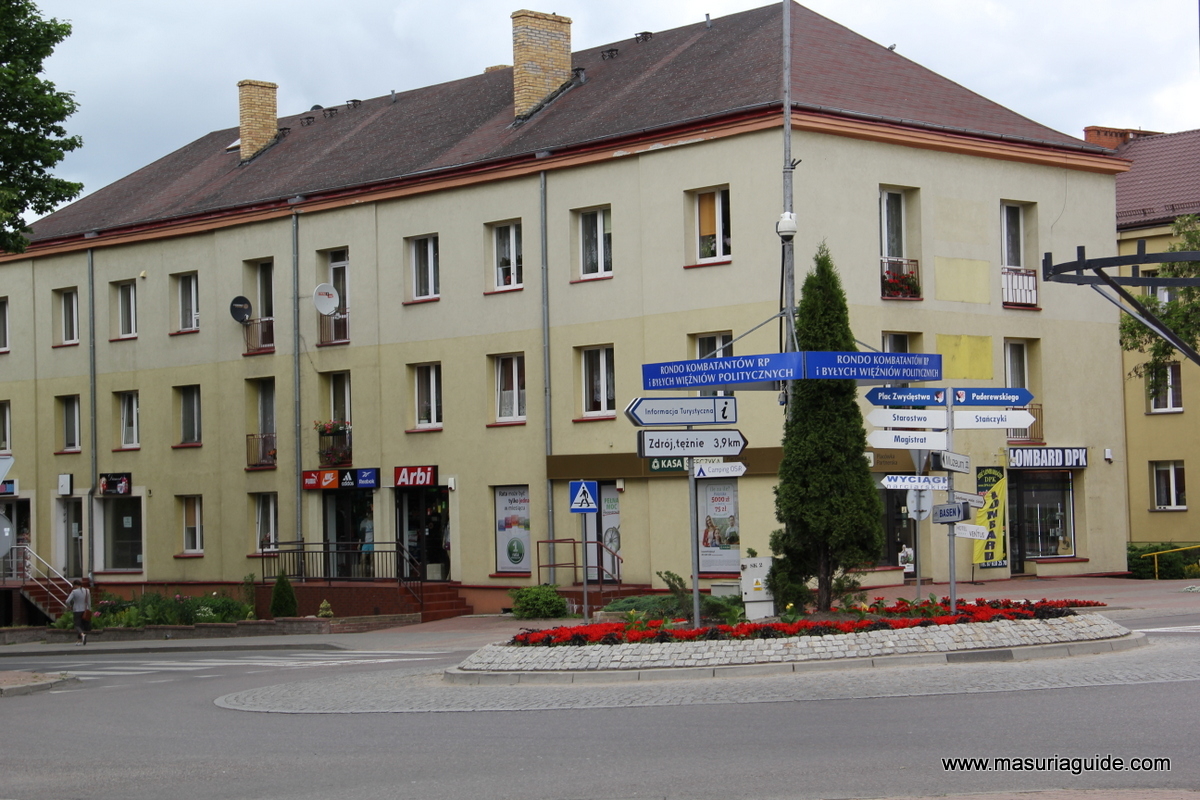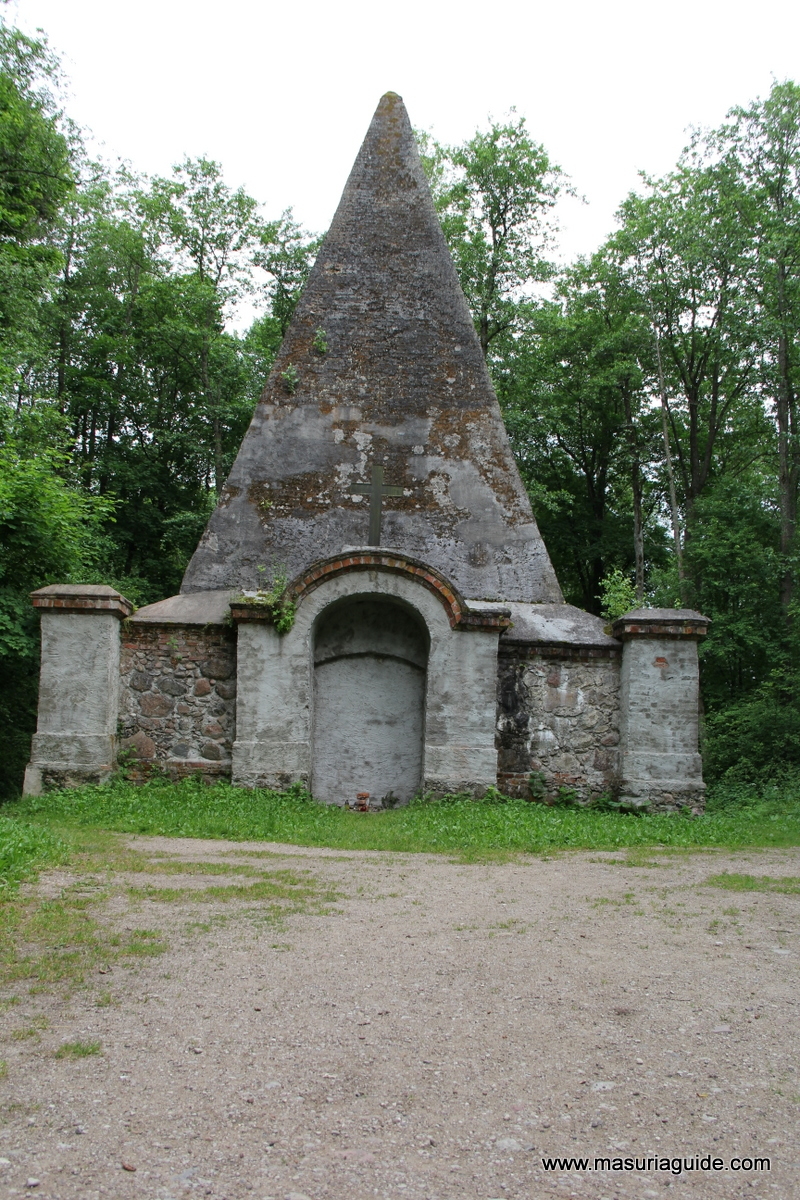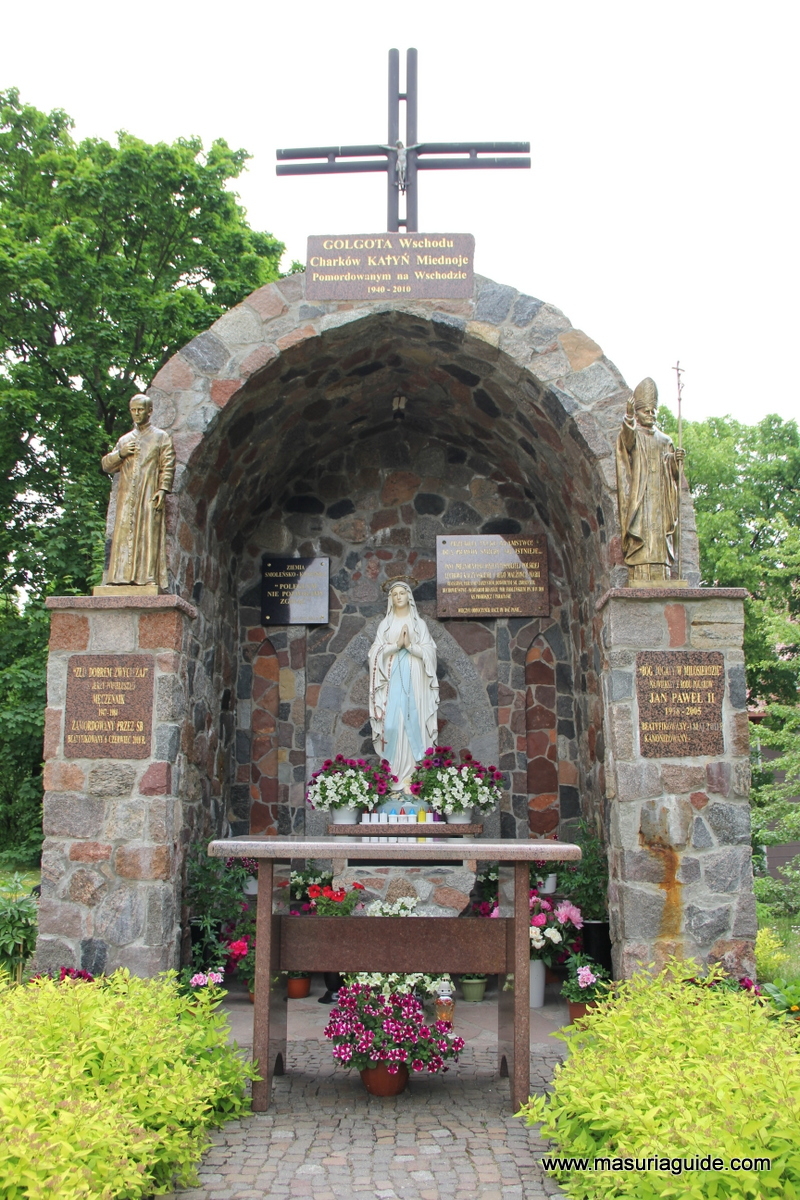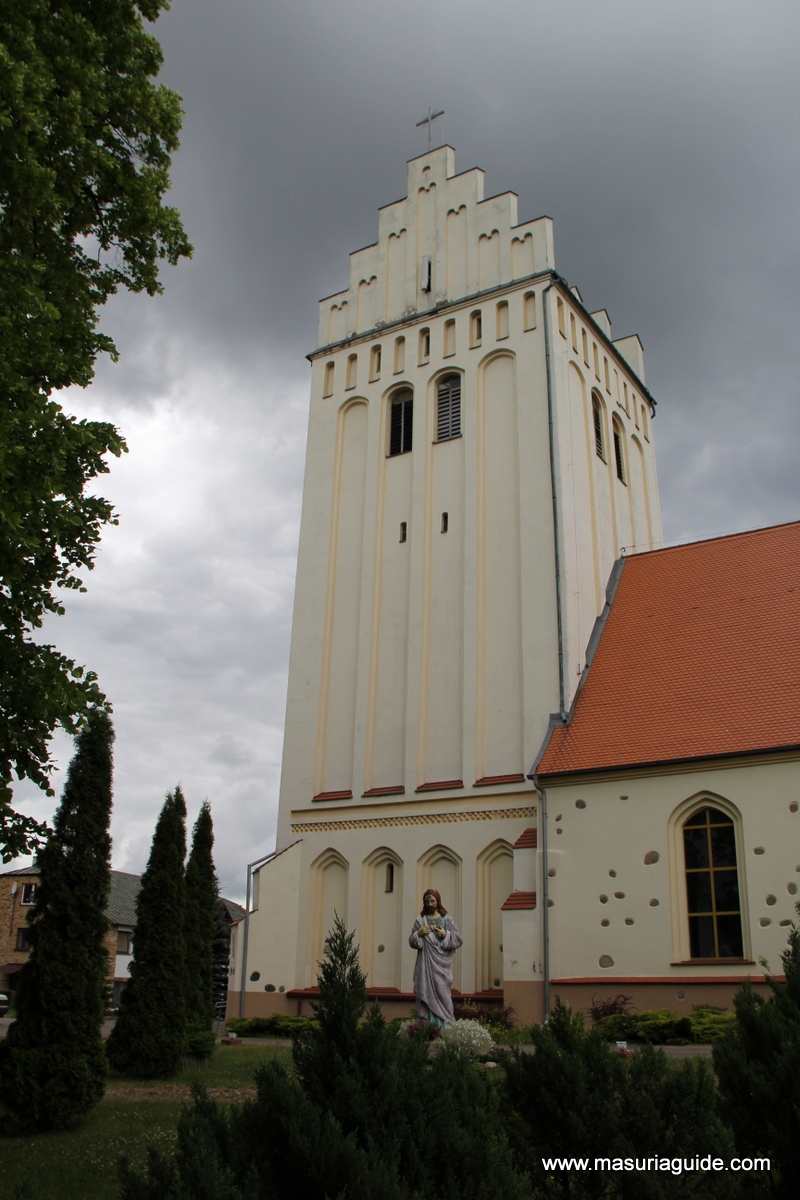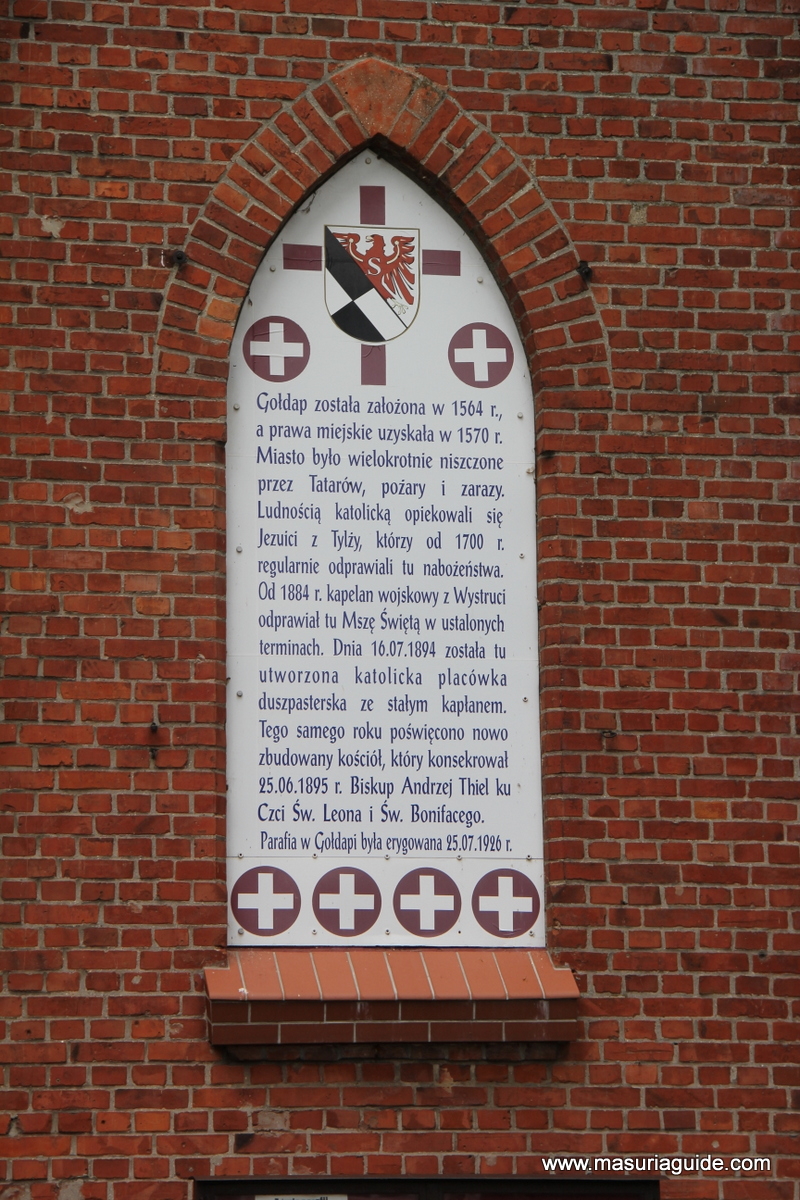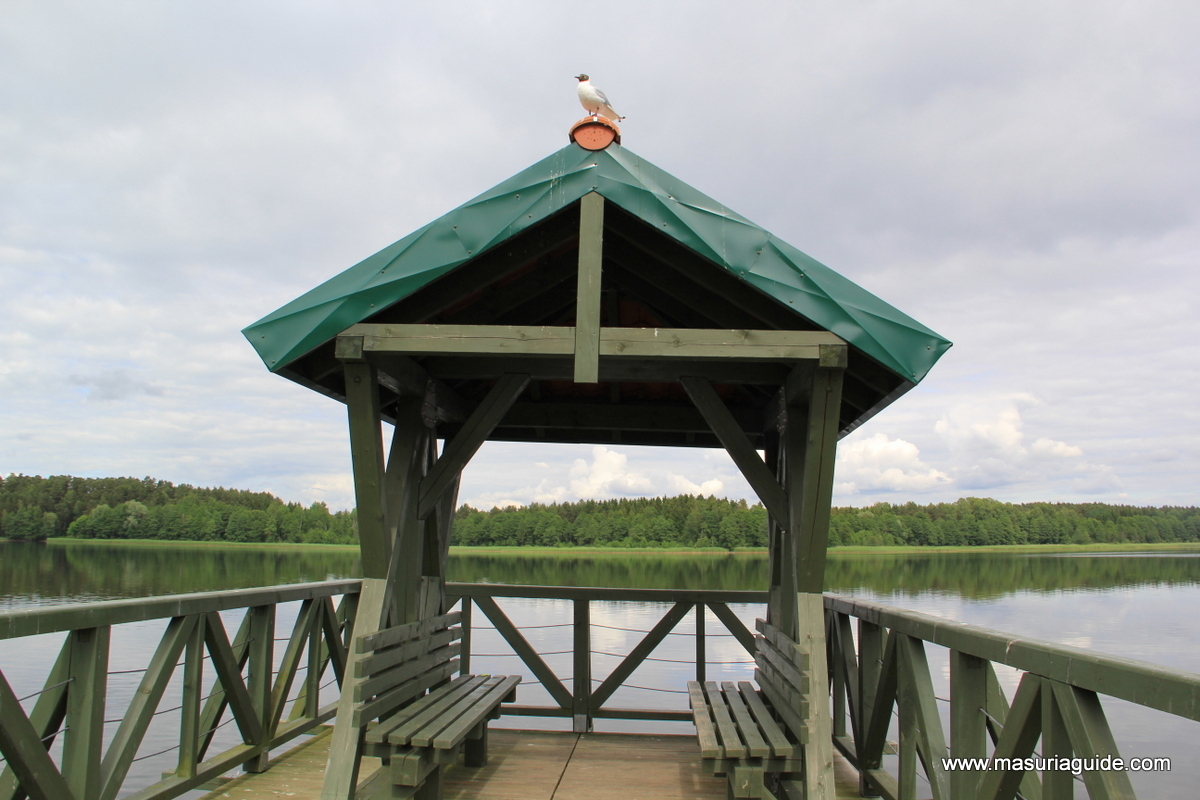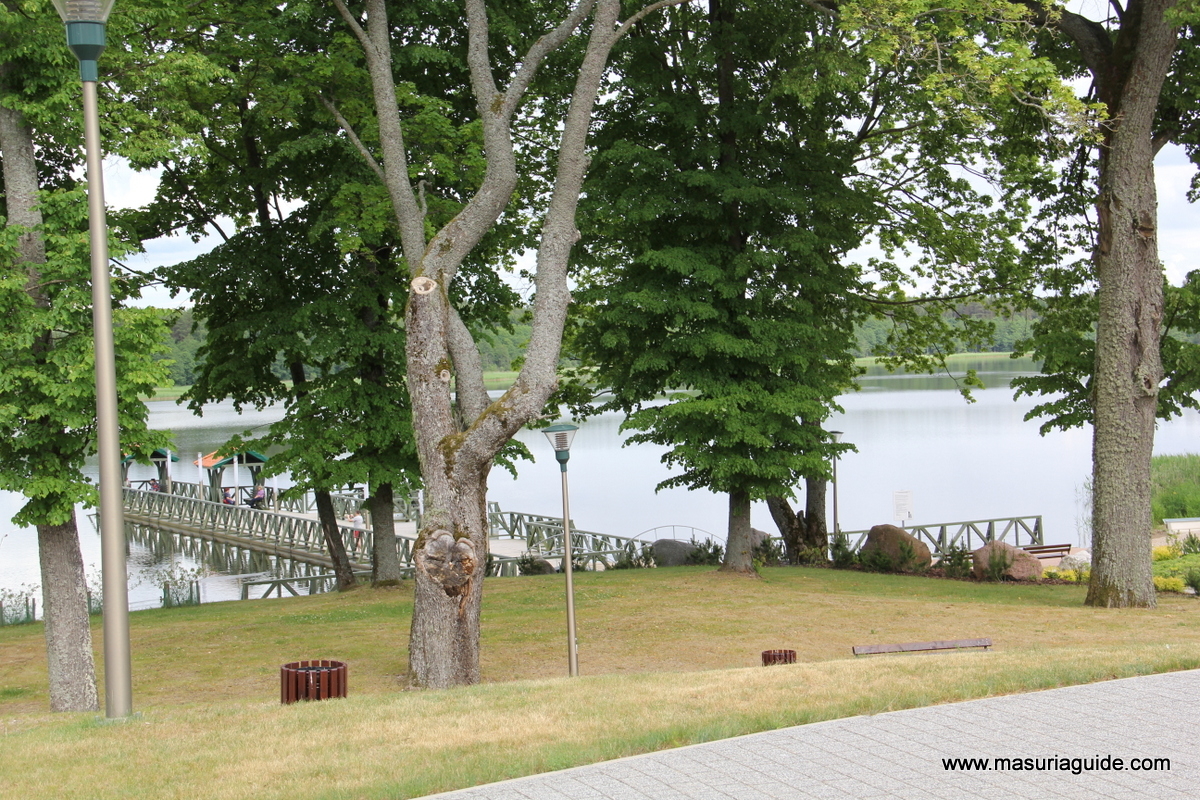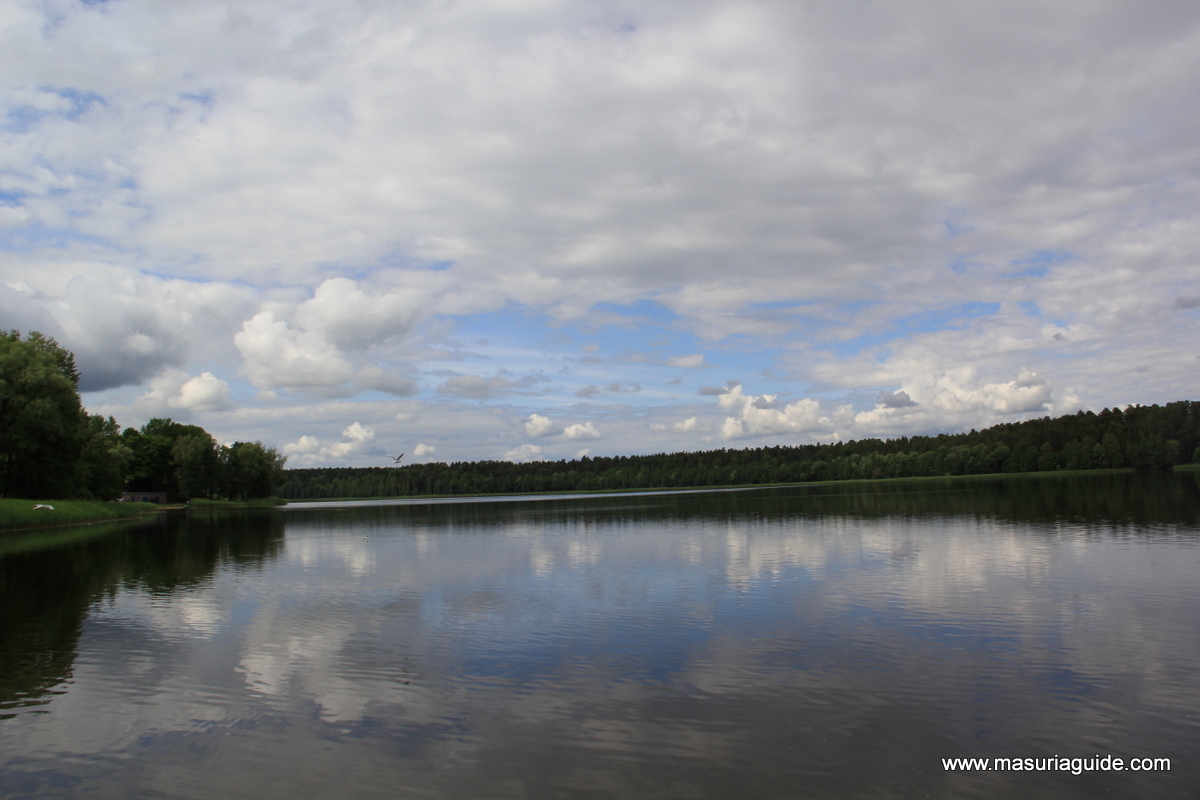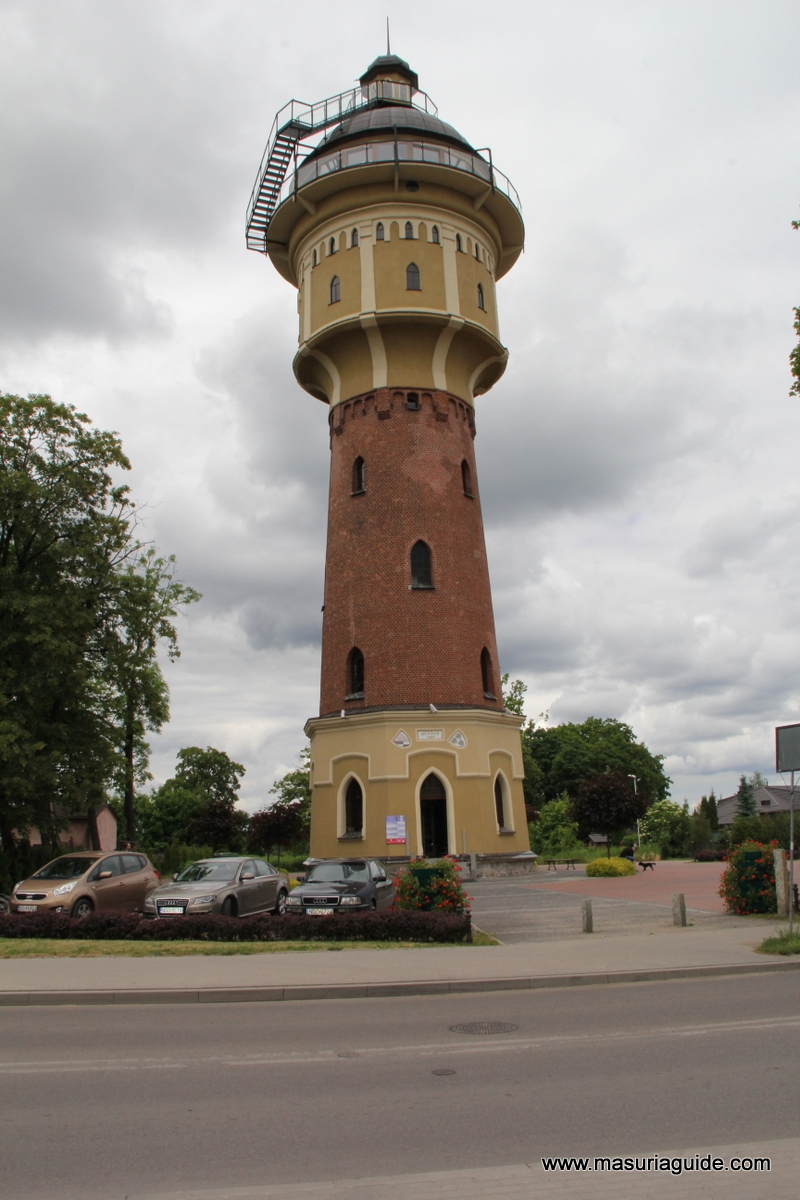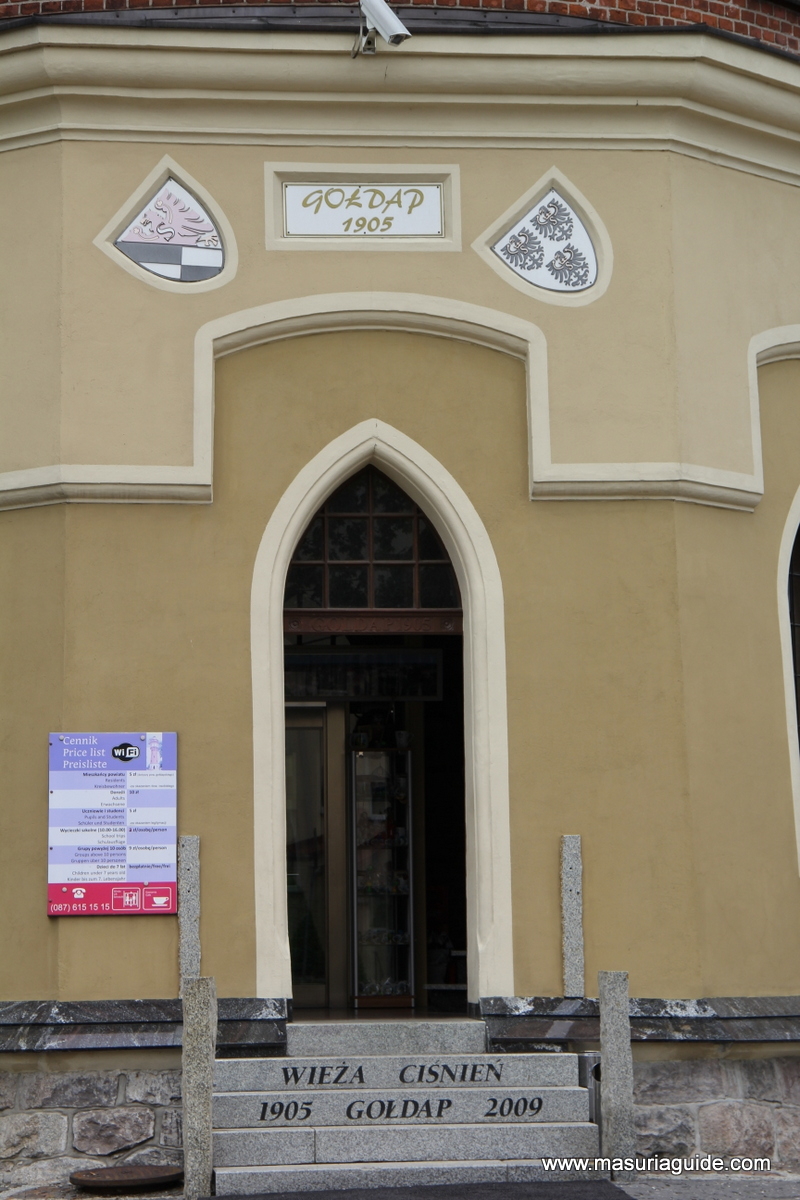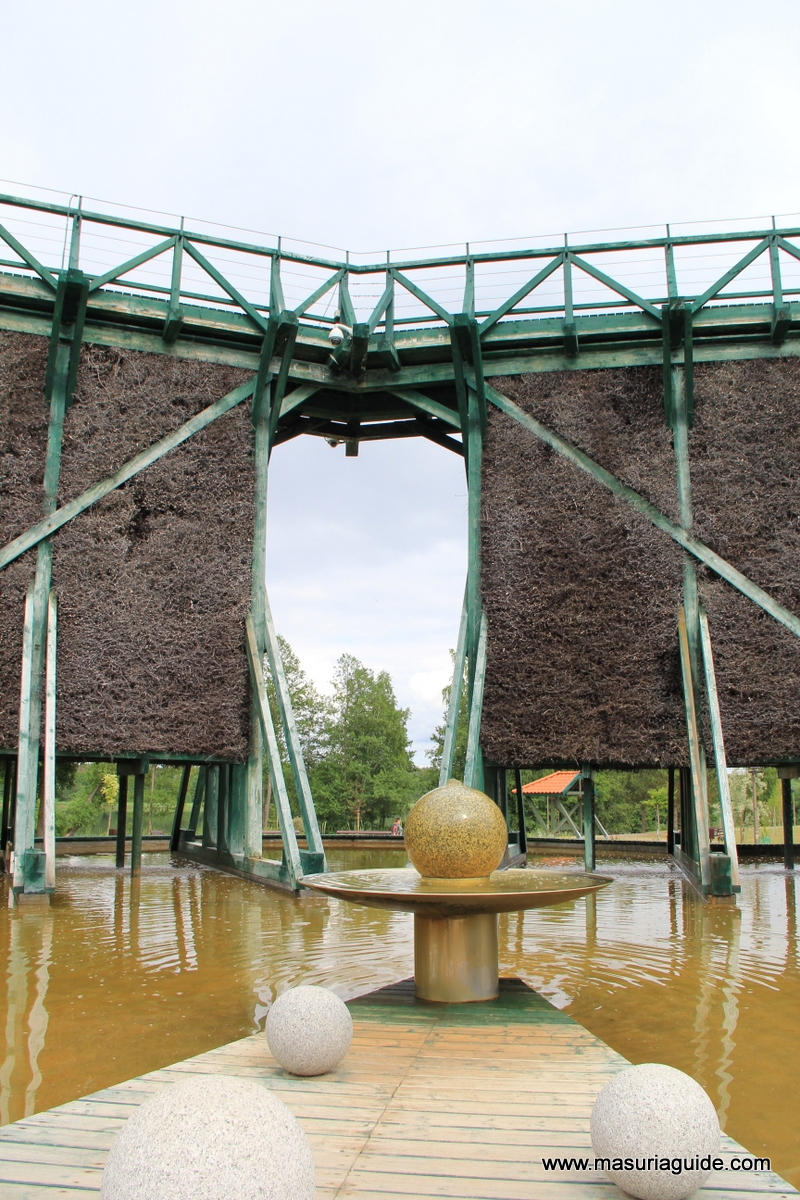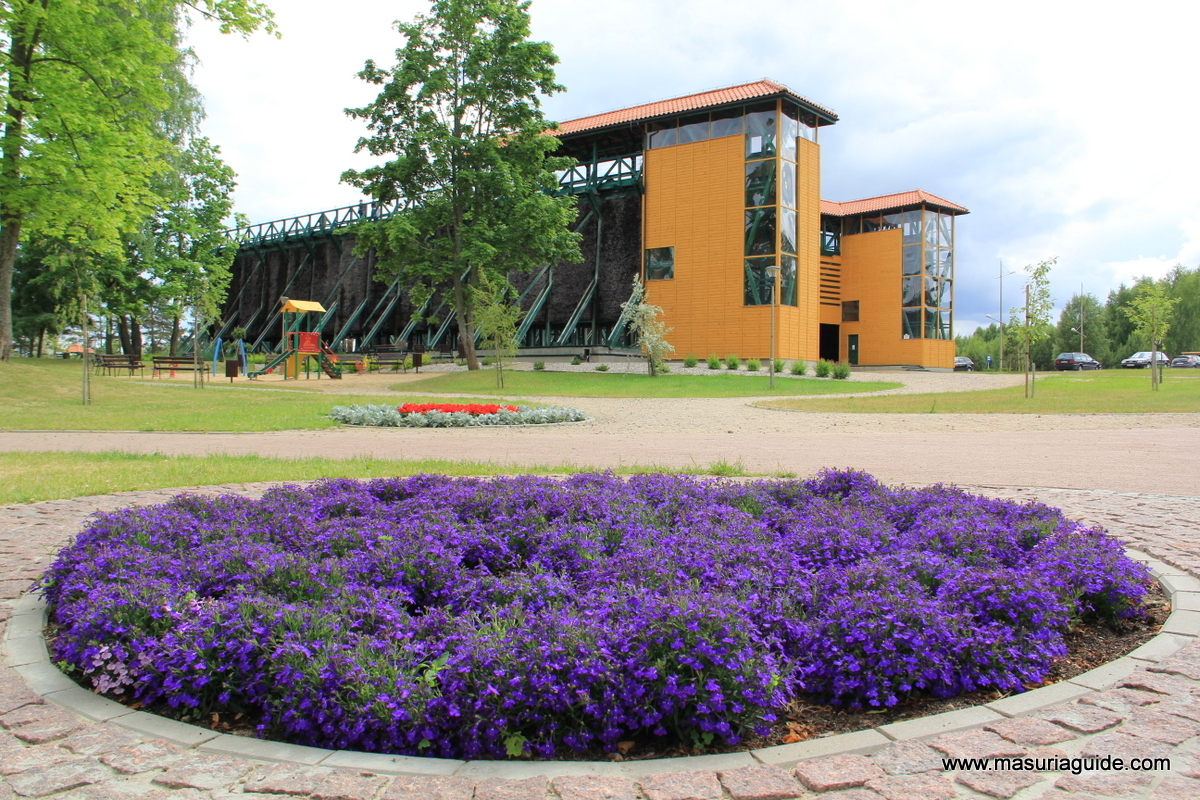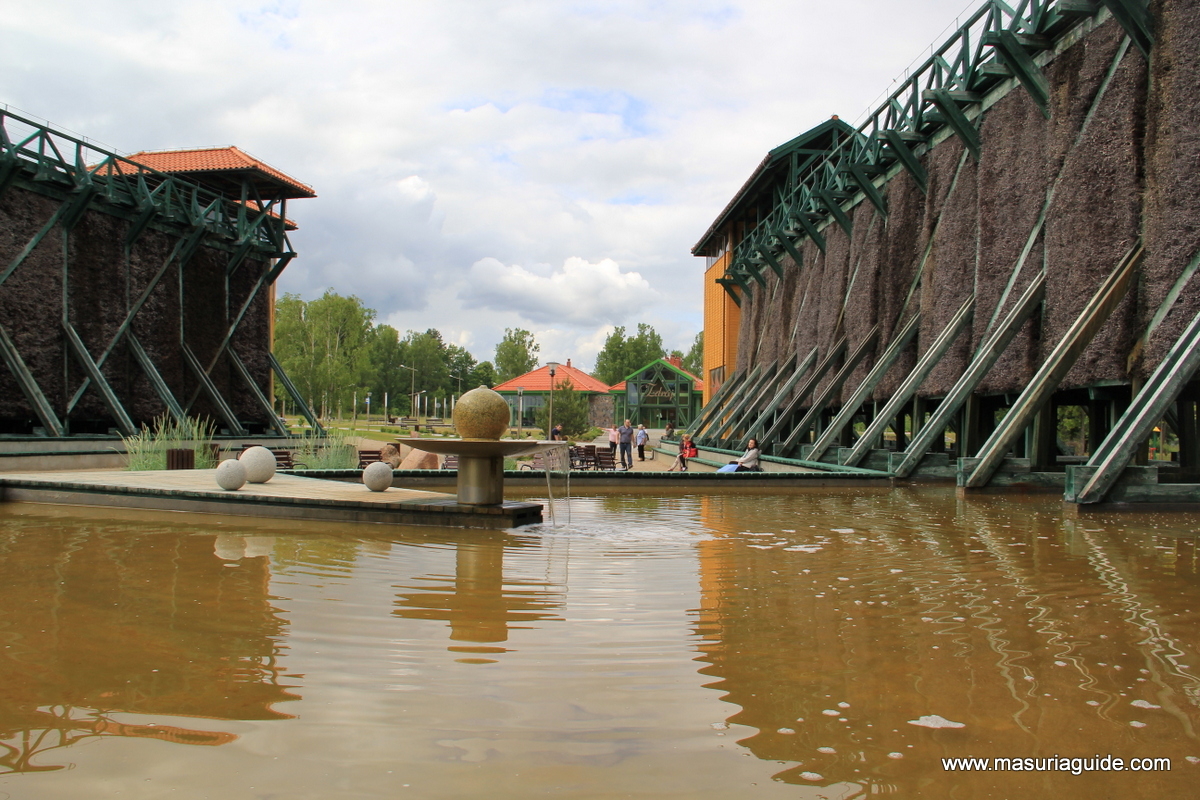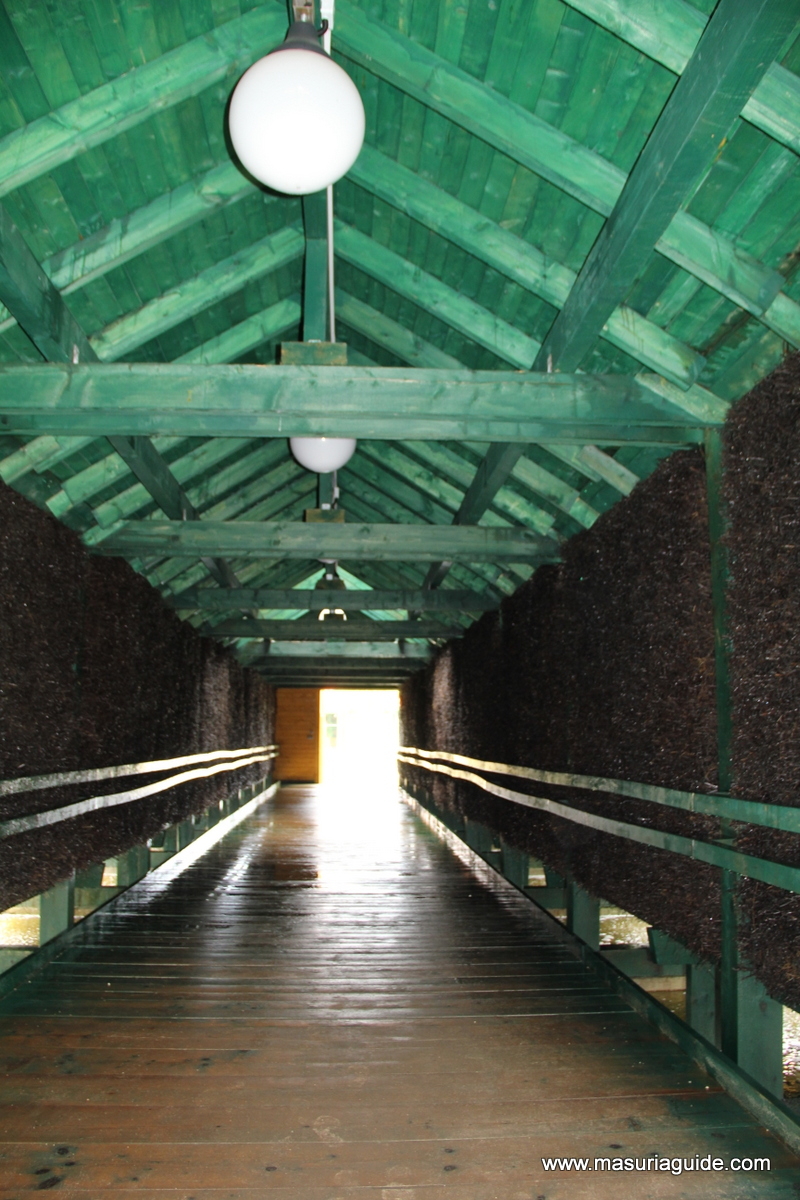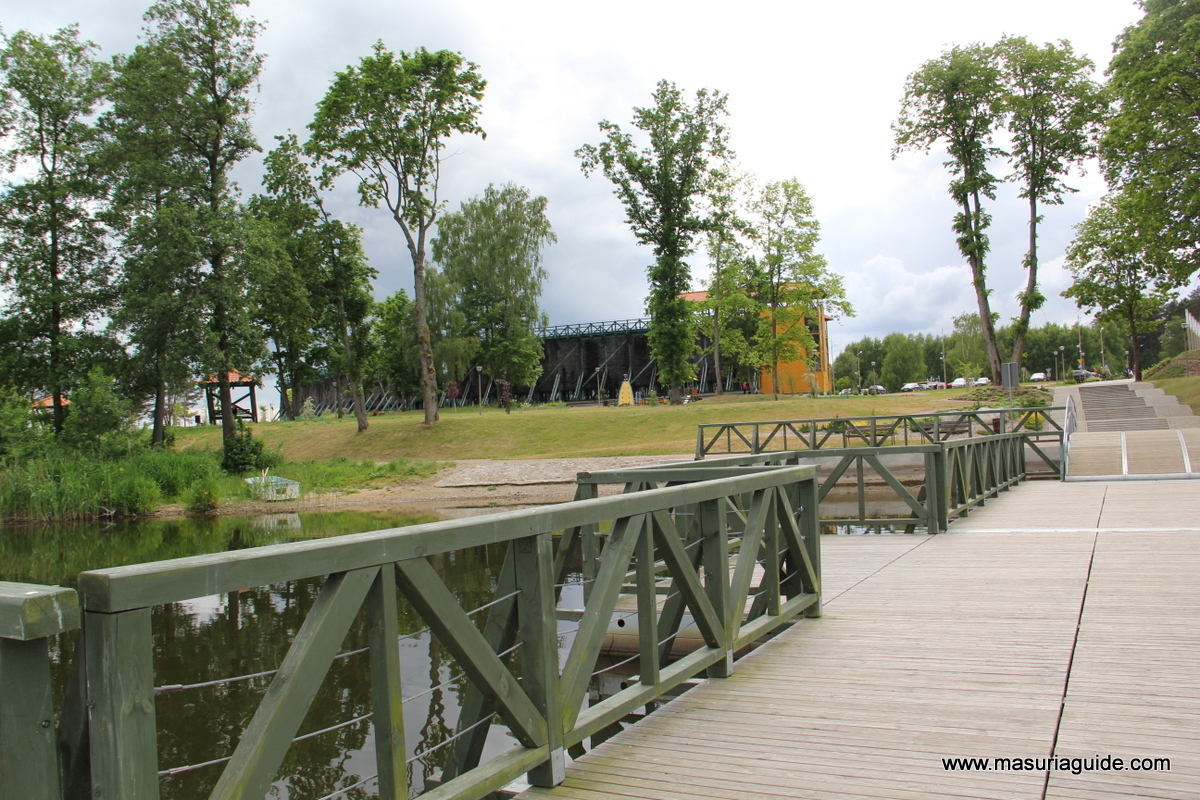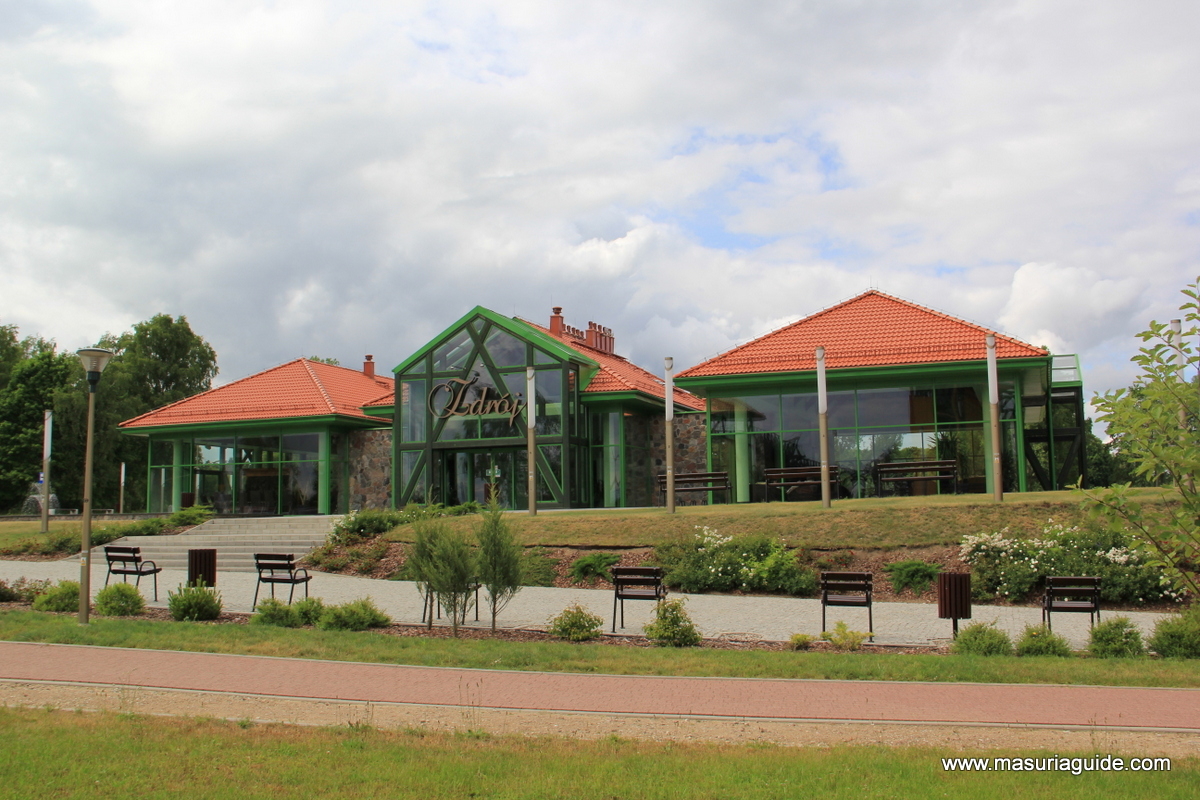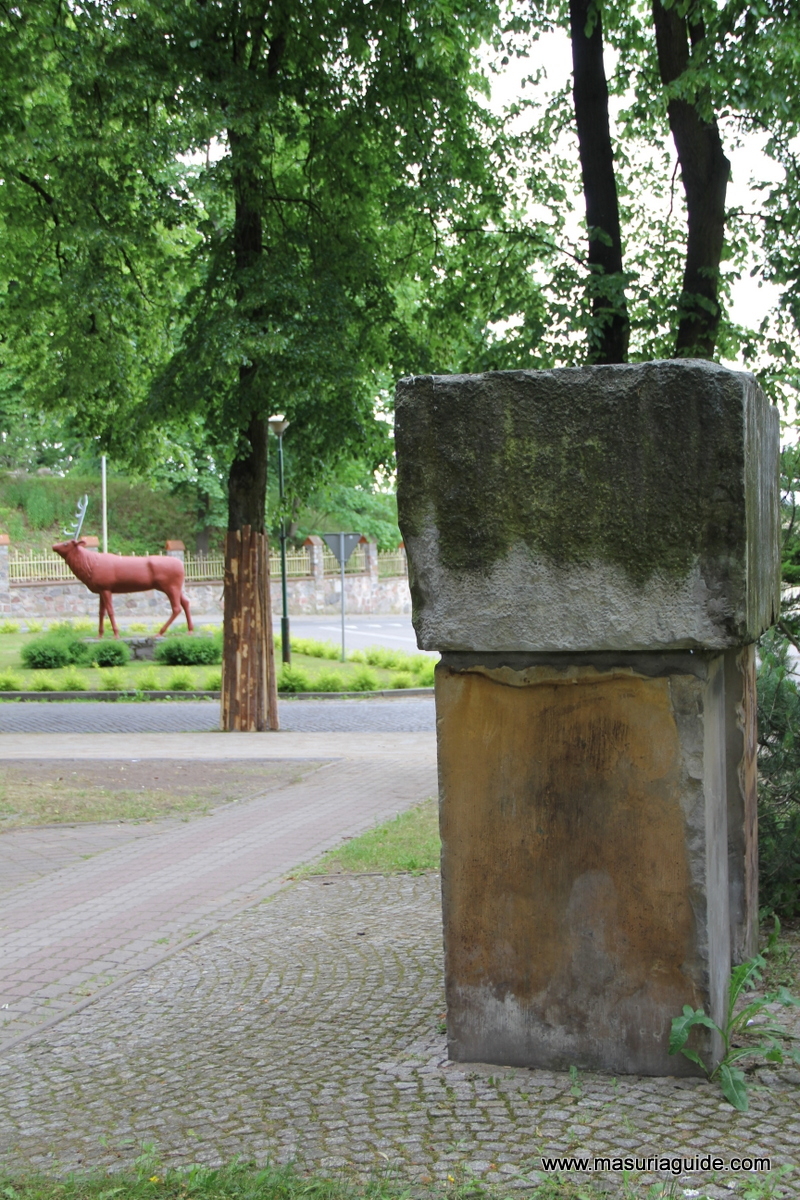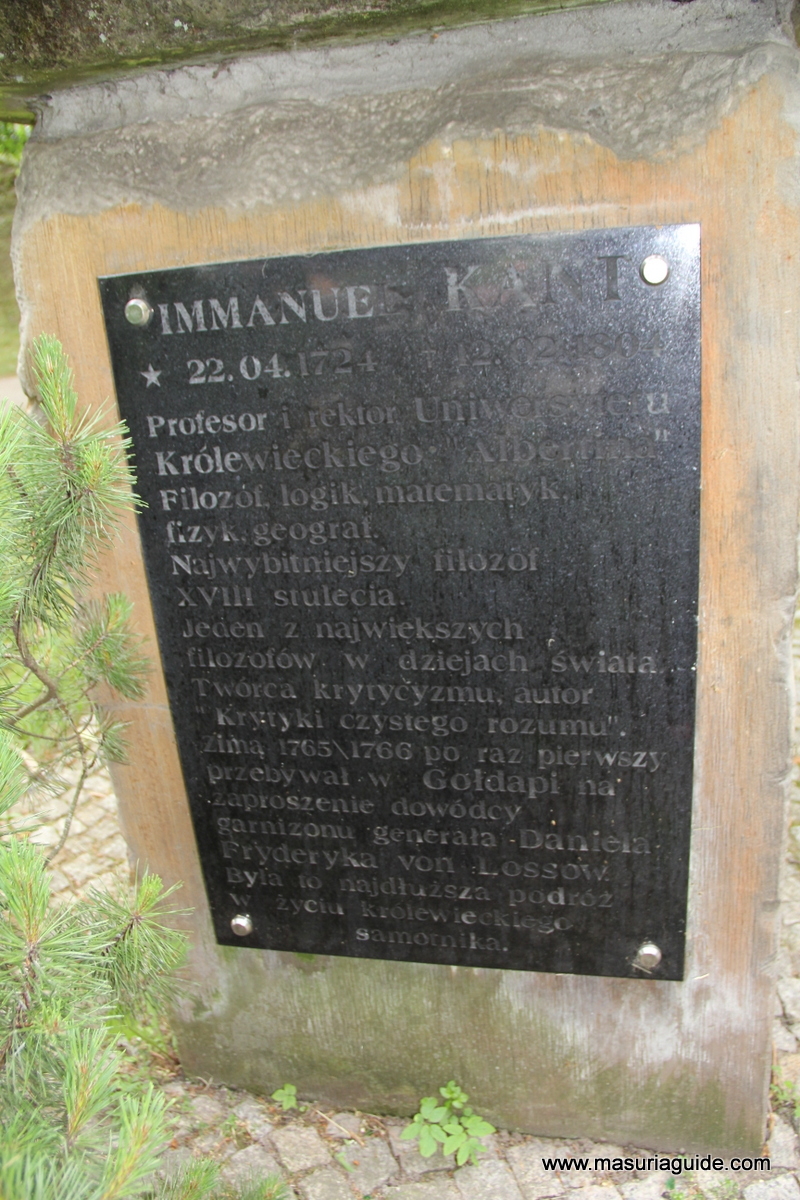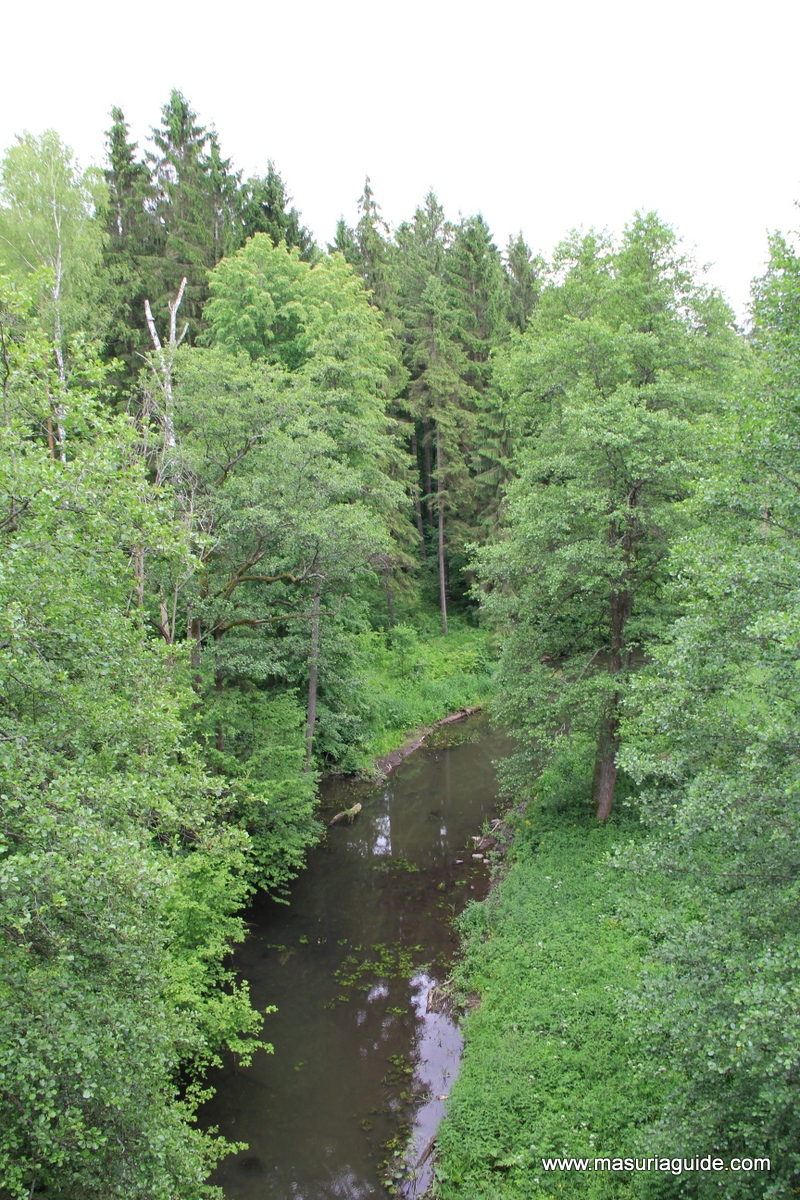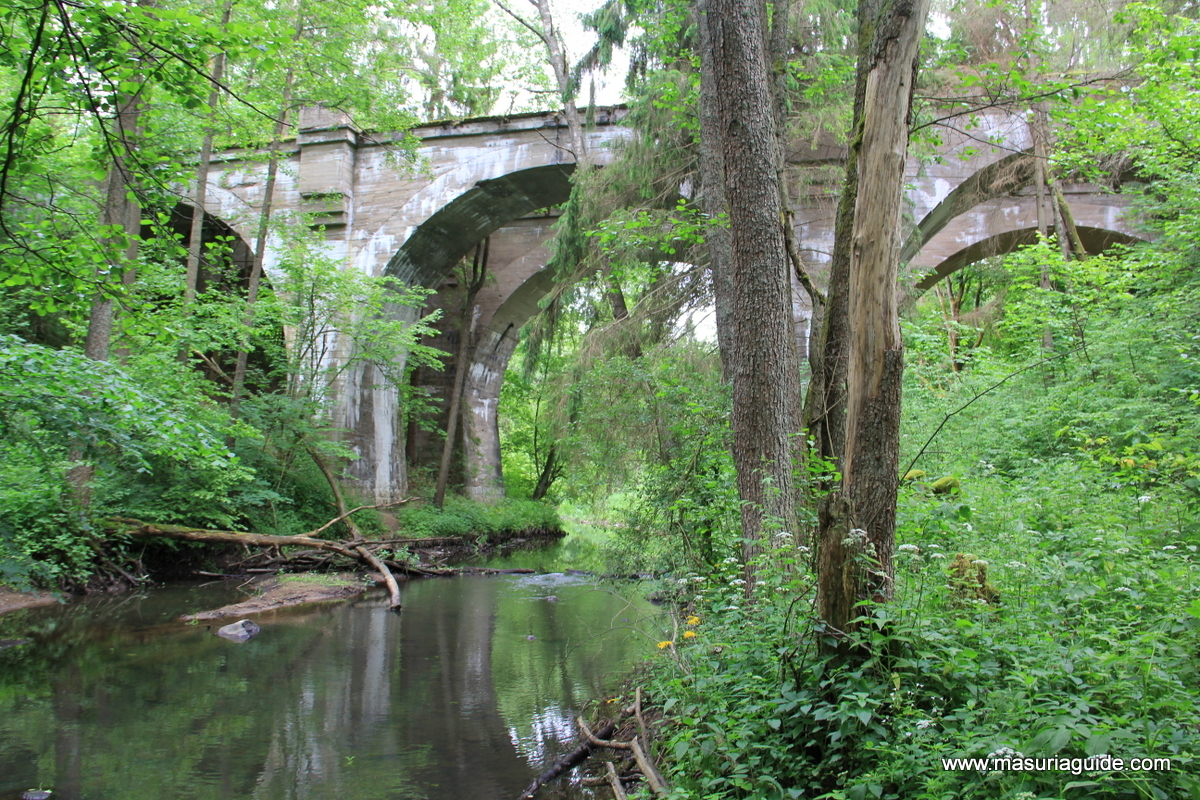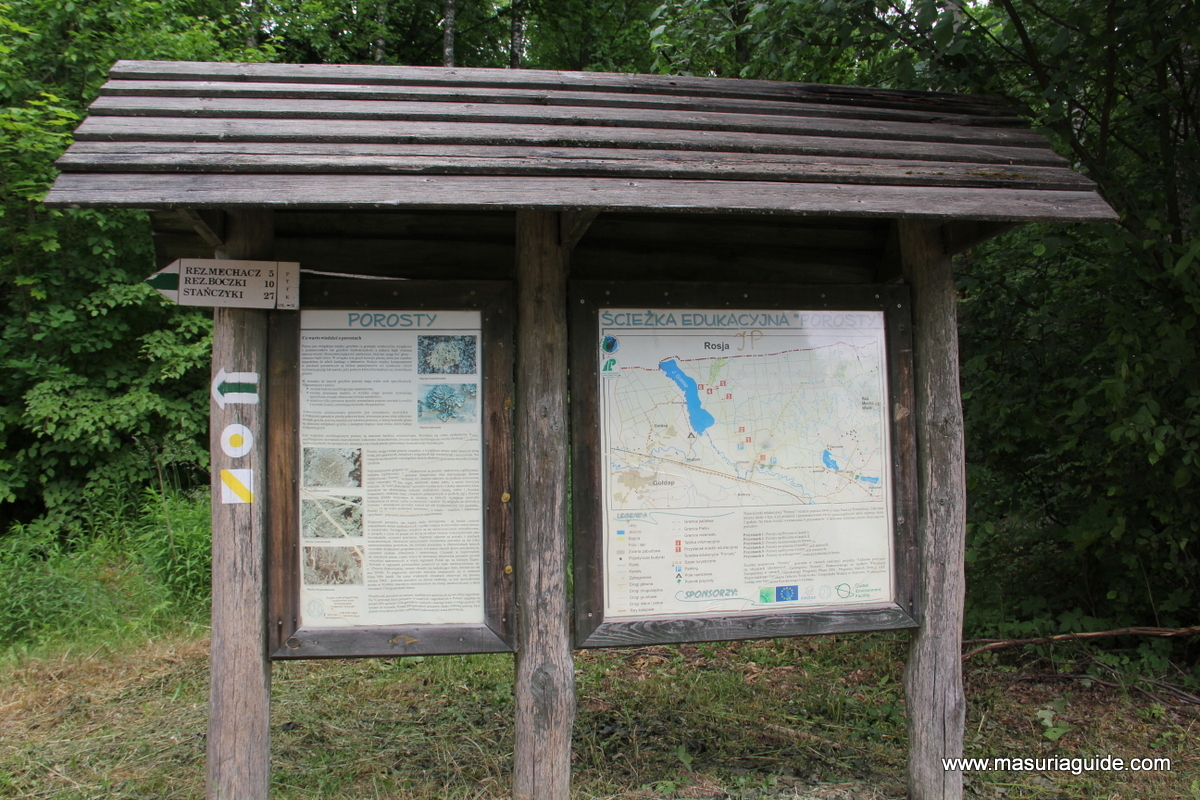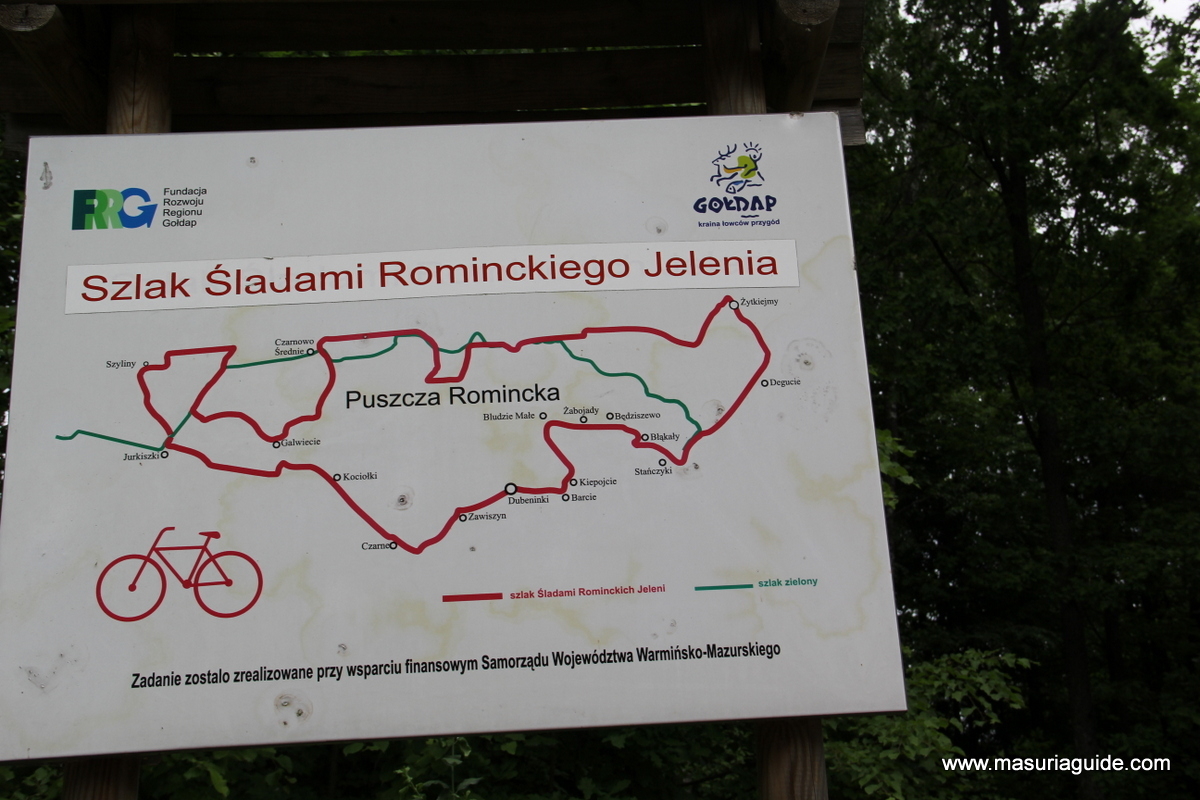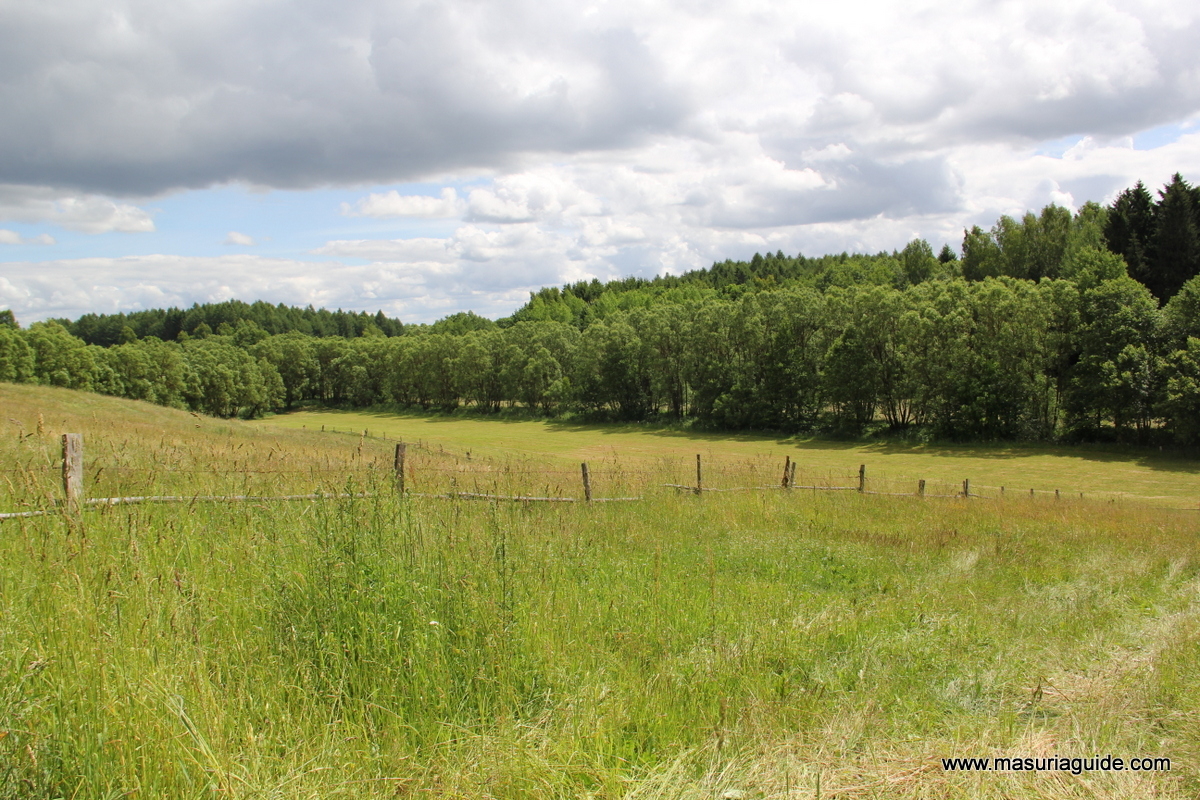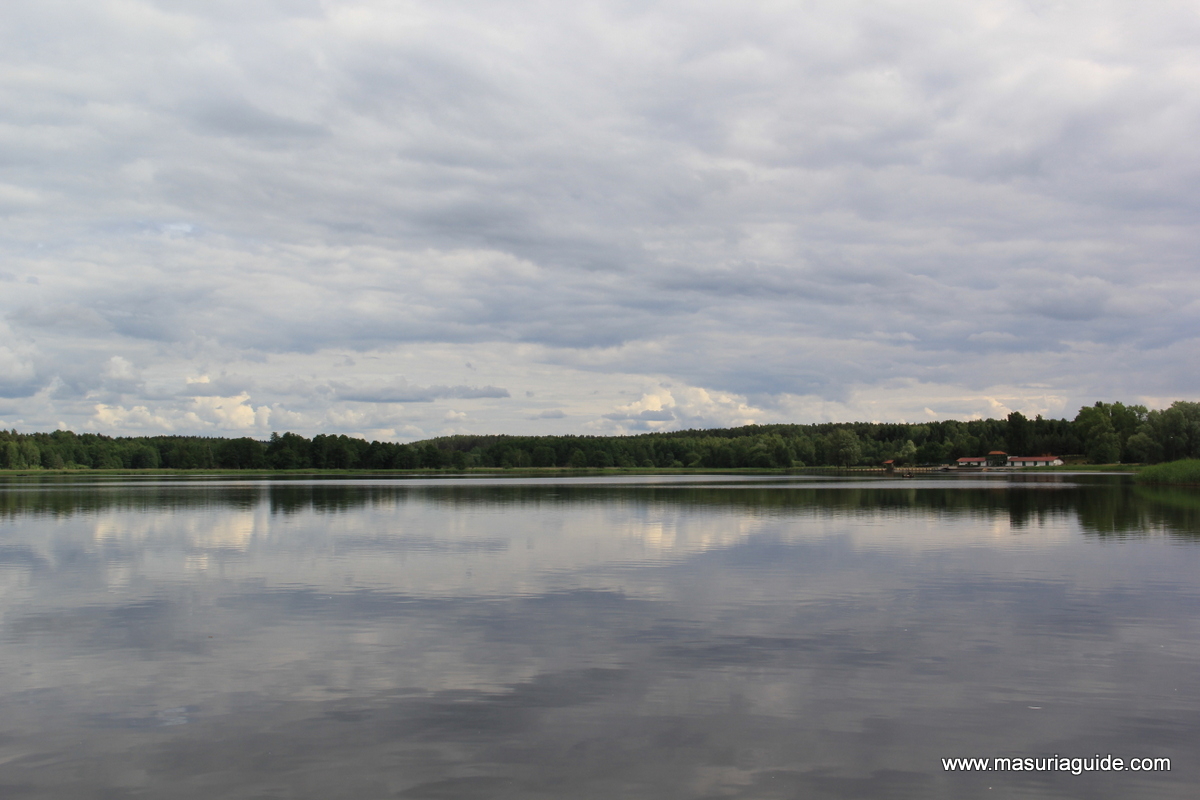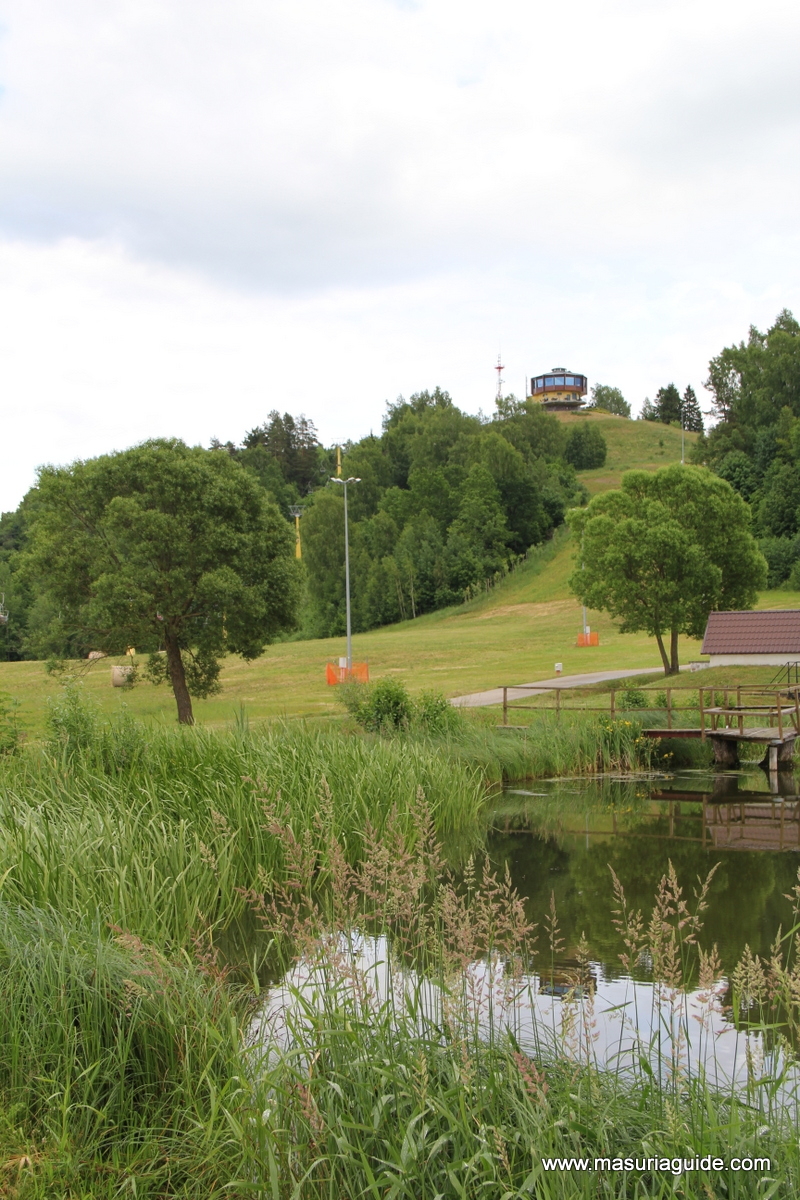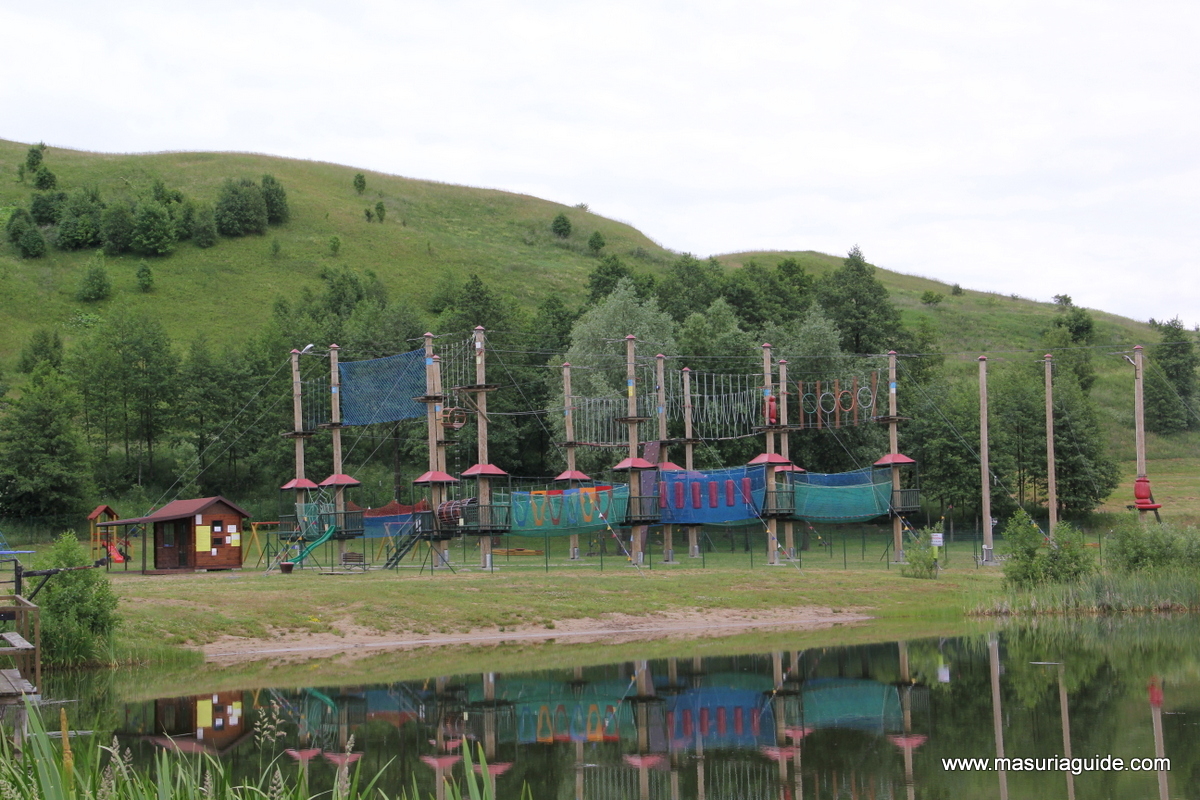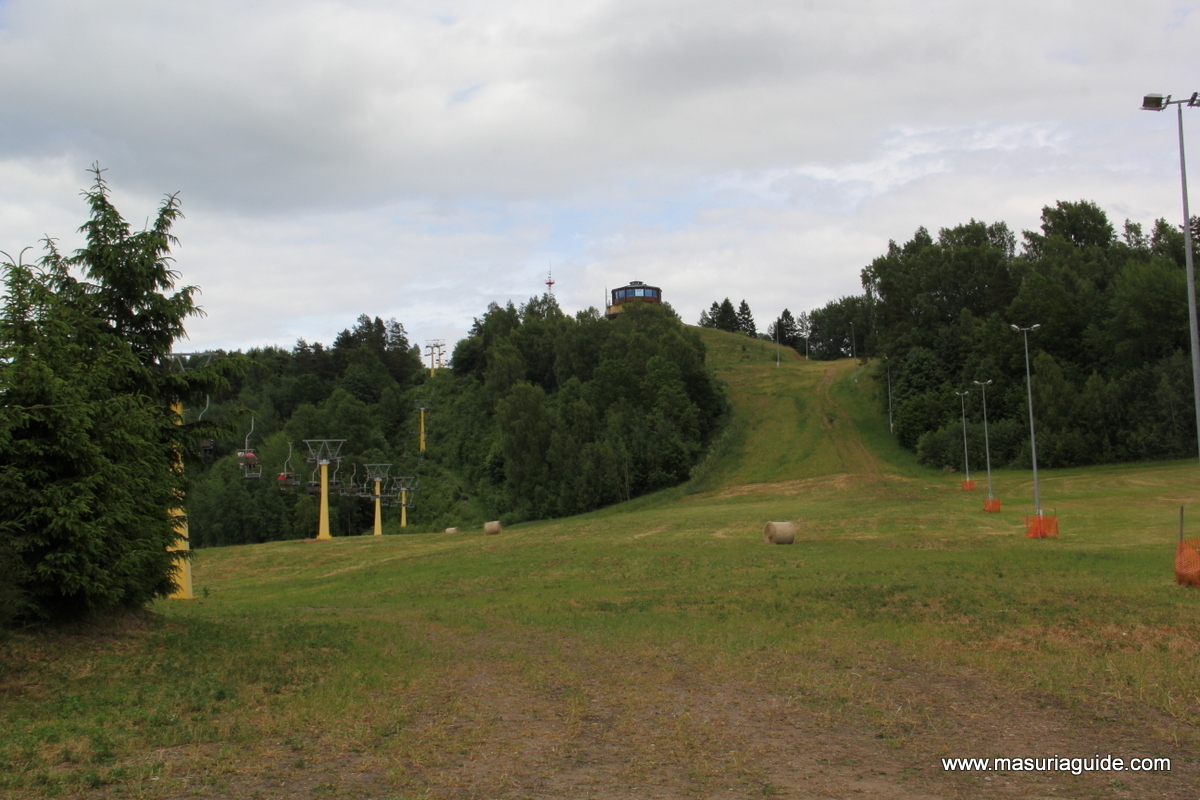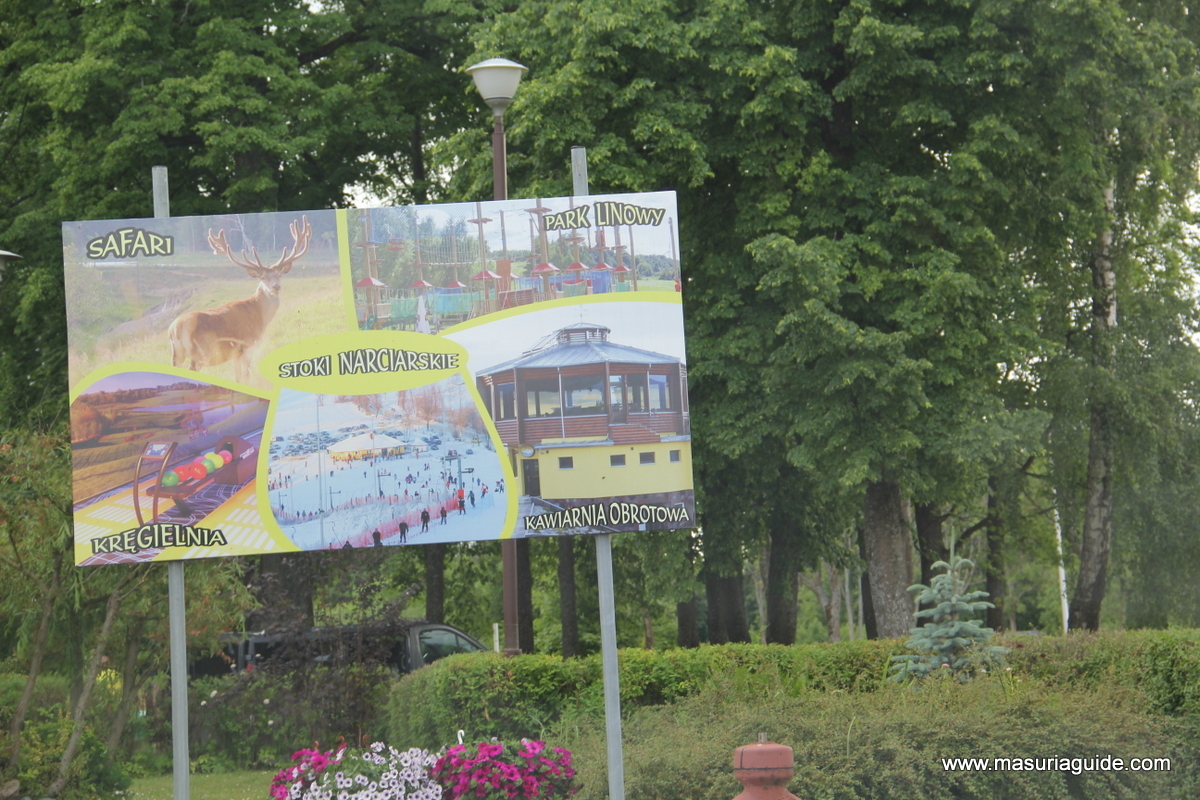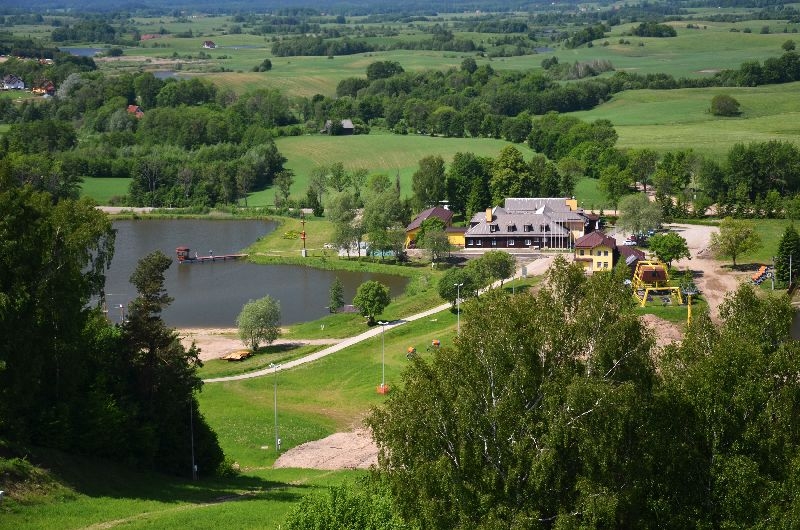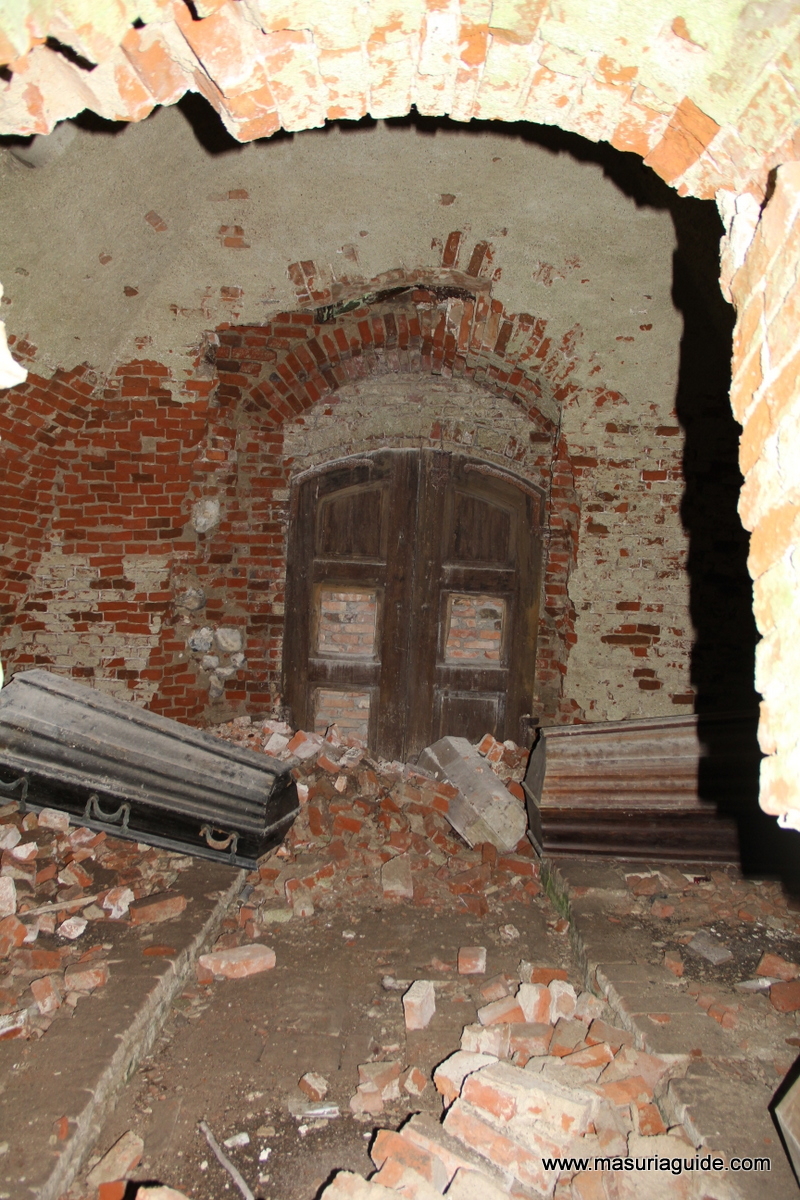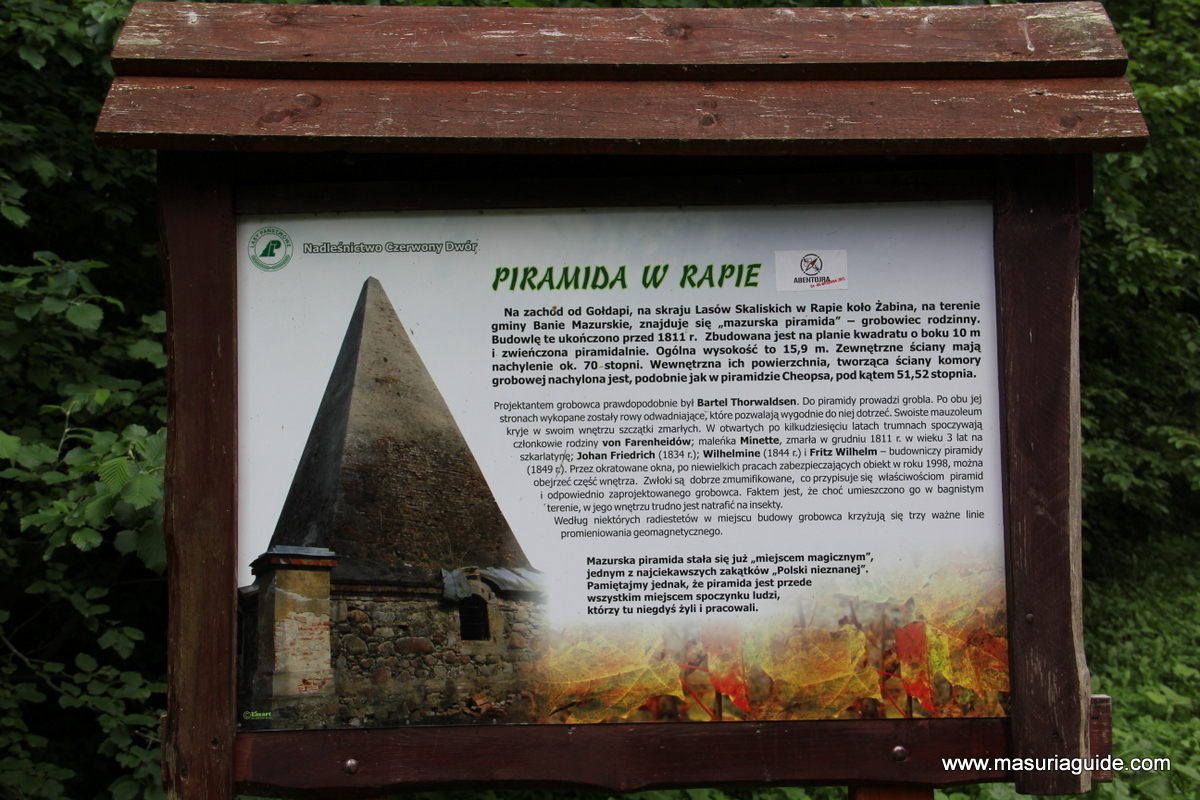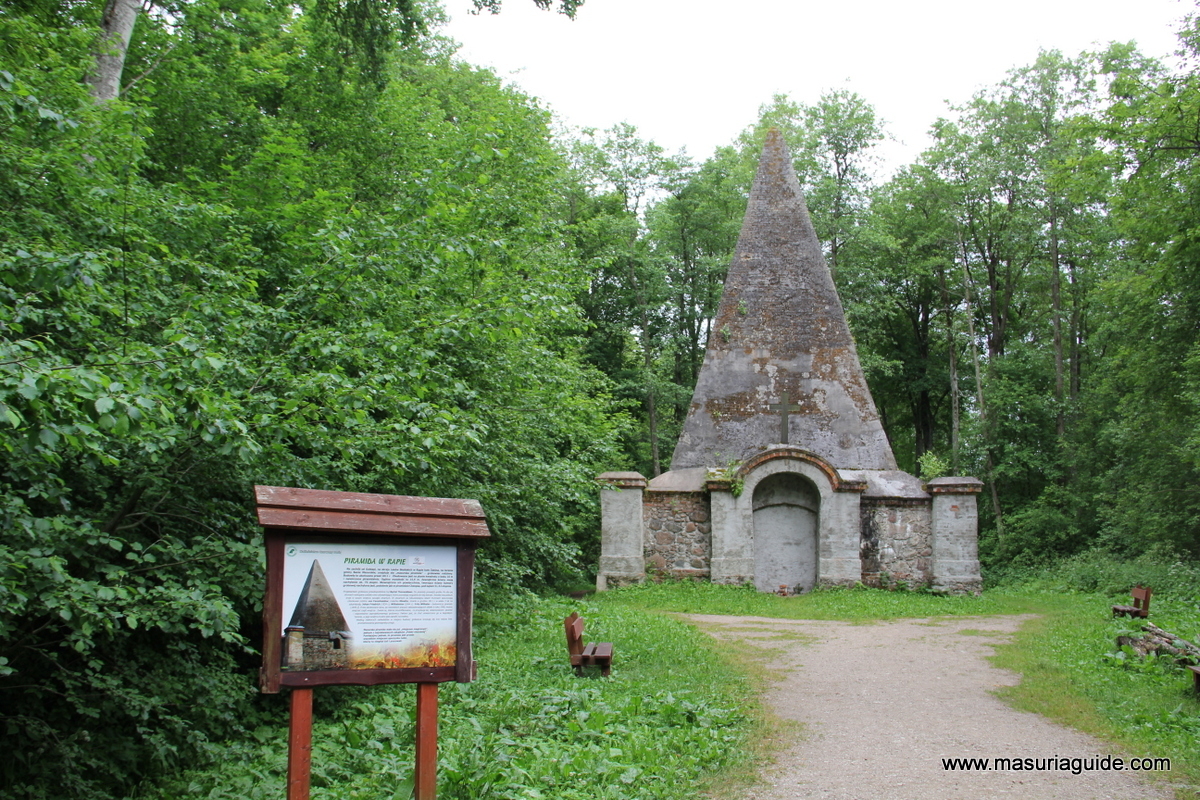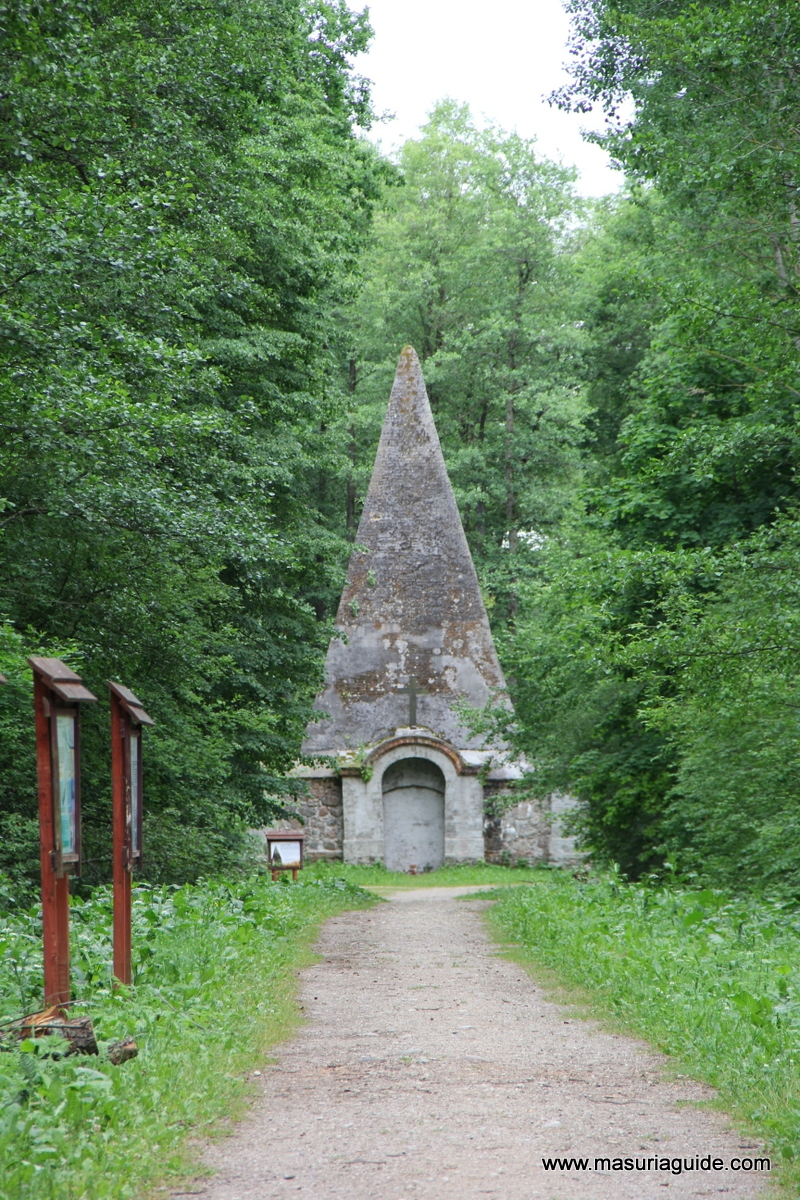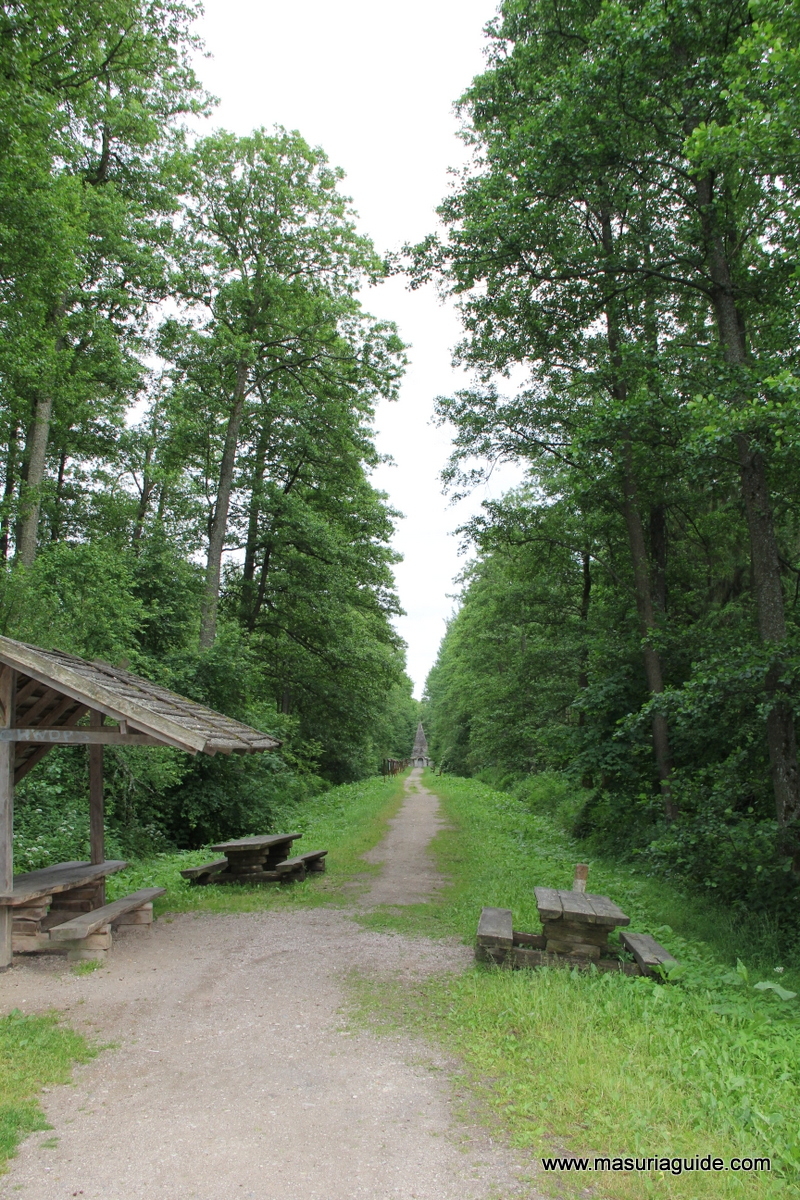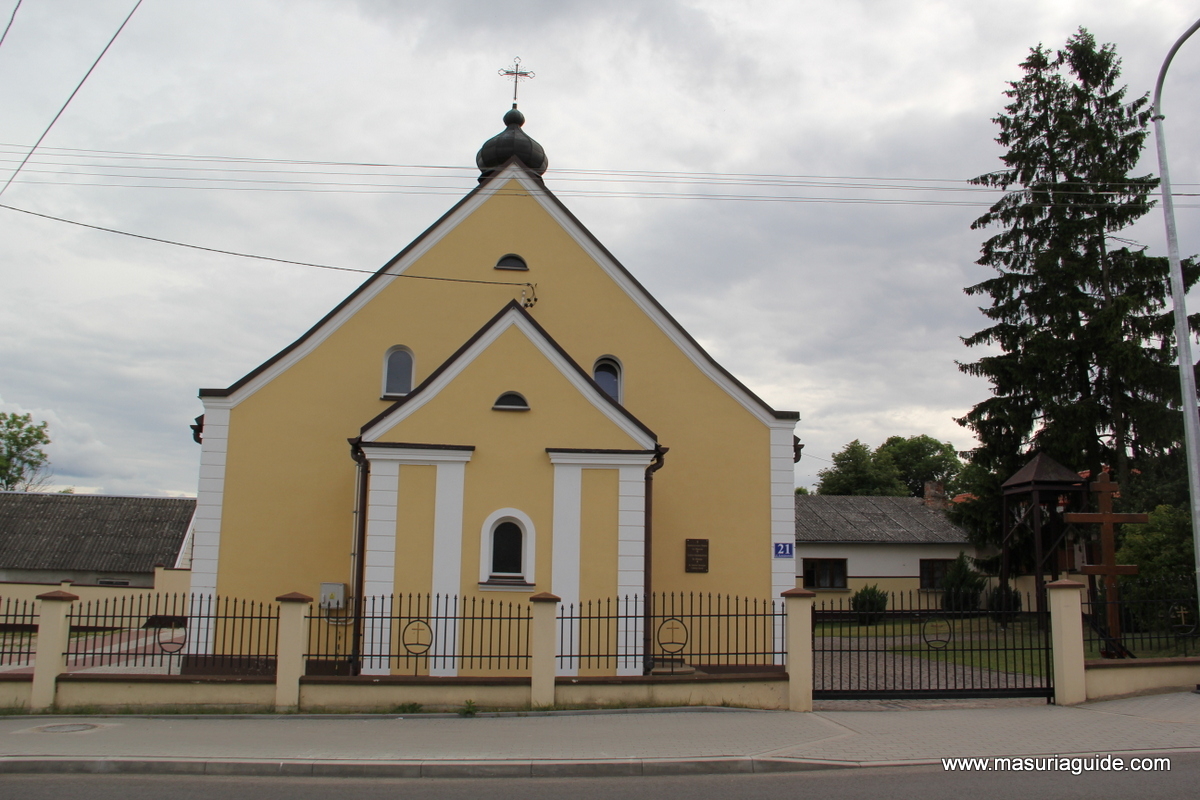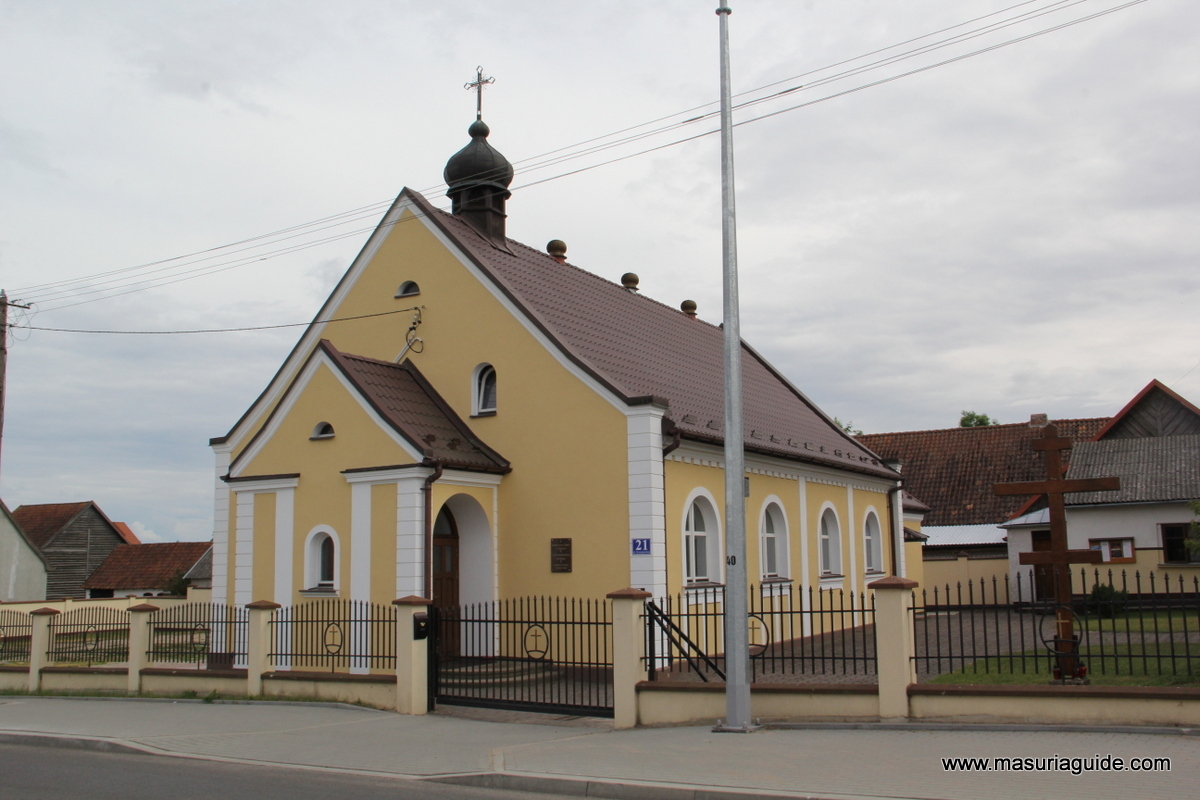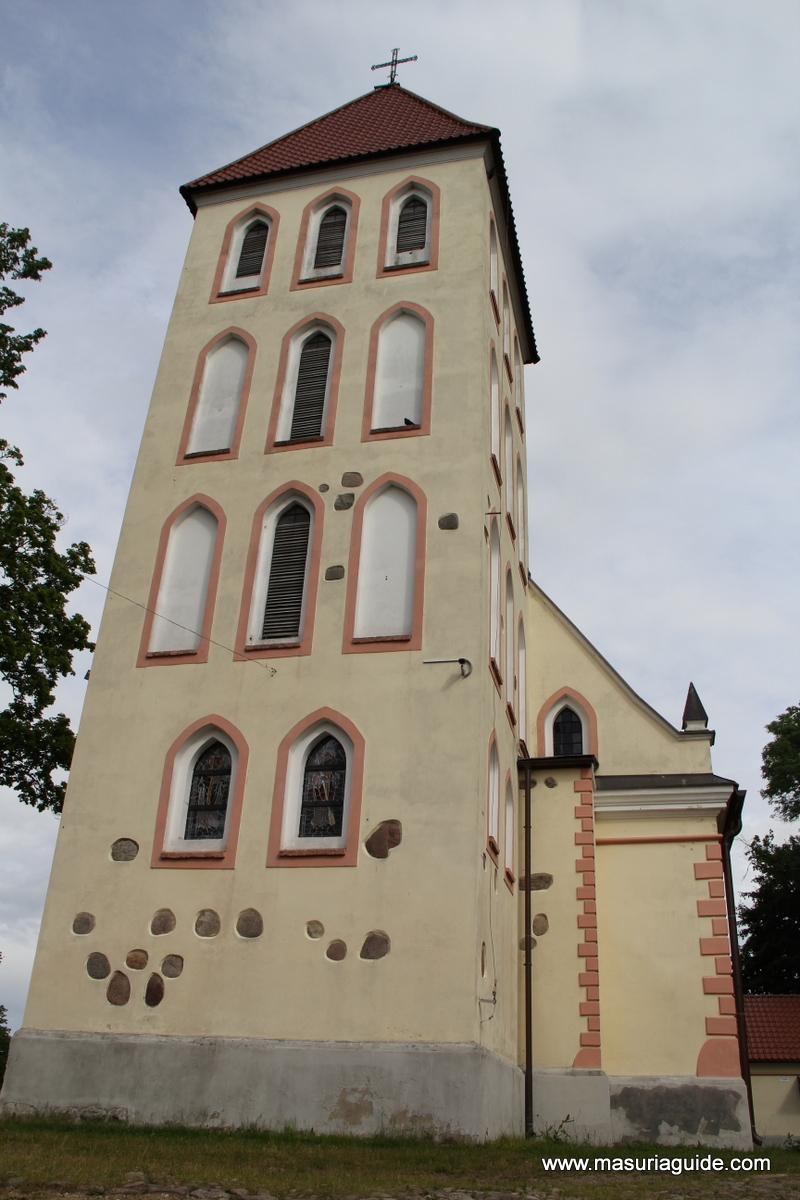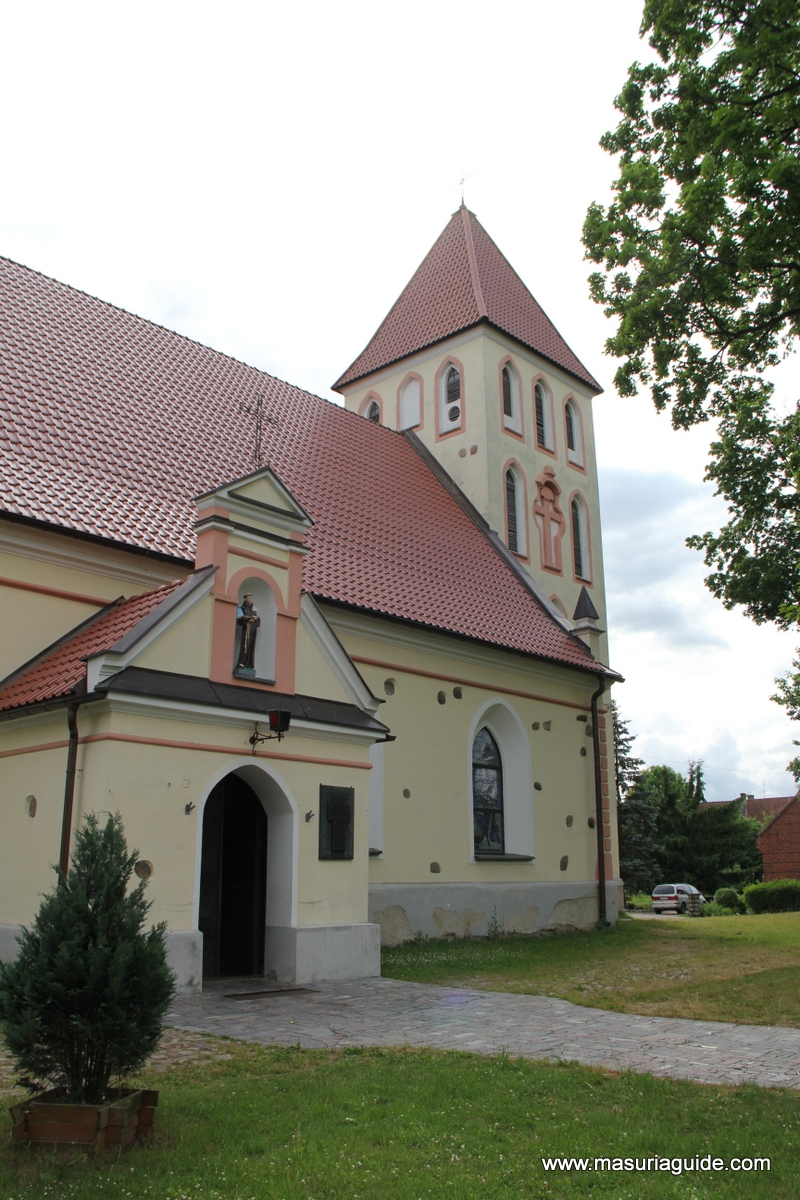Szlak Gołdap – Węgorzewo
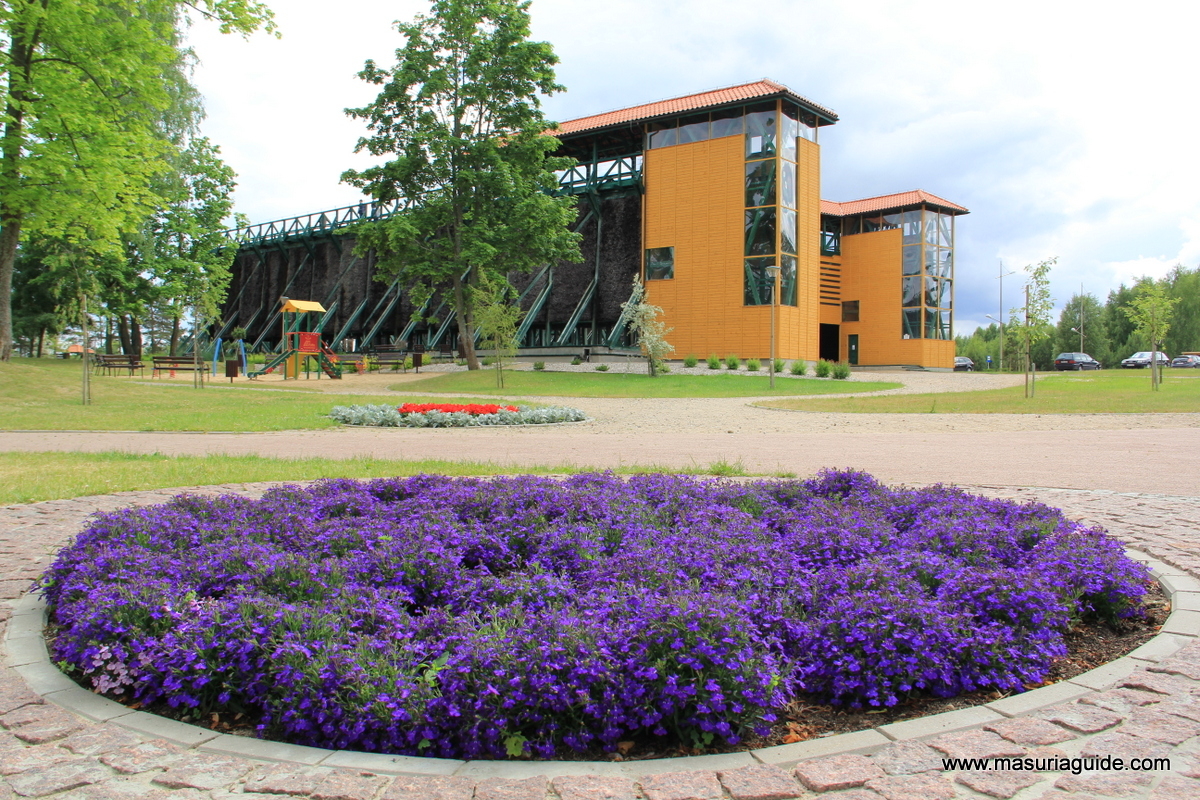
Szlak Gołdap – Węgorzewo
Route: Gołdap – Jabłońskie – Włosty – Juchnajcie – Sokoły – Rożyńsk Mł. – Ziemiany – Skaliszkiejmy – Klewiny – Kruki – Żabin – Rapa –Mieduniszki Wlk. – Skaliszki – Wydutki – Popioły.
There are plenty of viewpoints on this route. It leads through a Beautiful Mountain and Klewińskie and Kruckie hills, offering an amazing panorama. Along the way, you can admire the historic manor courts from the nineteenth century and the pyramid in Rapa. Also impressive are the areas around the loop of Węgorapa river and along Brożajcki Canal.
https://www.youtube.com/watch?v=sHGFwvL9xVM
See also
Wokół Jeziora Selmęt Wielki Rechot Wiewiórcza ścieżka Suwalski Gigant Szlak im. M. KajkiPlaces on the trail
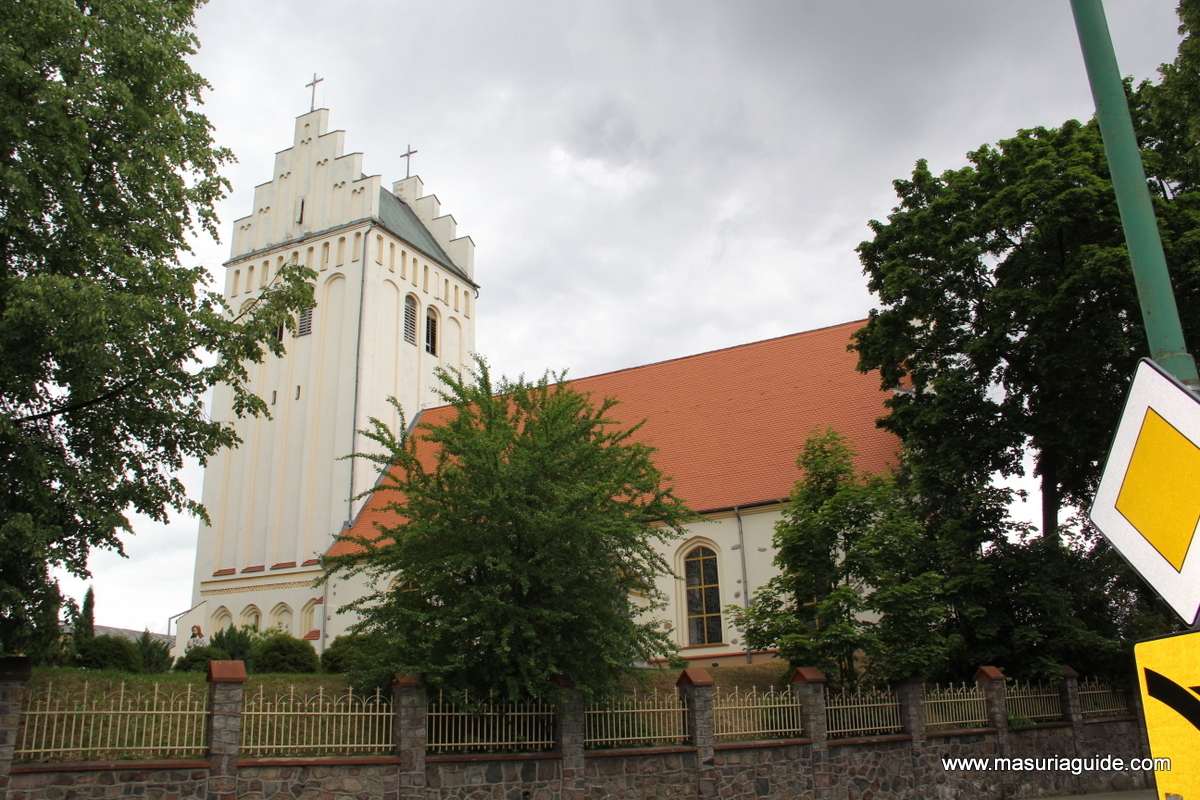
Kościół NMP Matki Kościoła w Gołdapi
The Church has come a long way to finally become a Holy Concatedral. Establishment of the first Protestant parish dates back to the year 1568, but the building was constructed in eighteenth century. The fights in 1944 - 1945 contributed to major destruction of the building, which was almost completely destroyed. Luckily, residents and priests stubbornly sought its restoration and managed to collect funds for this purpose.
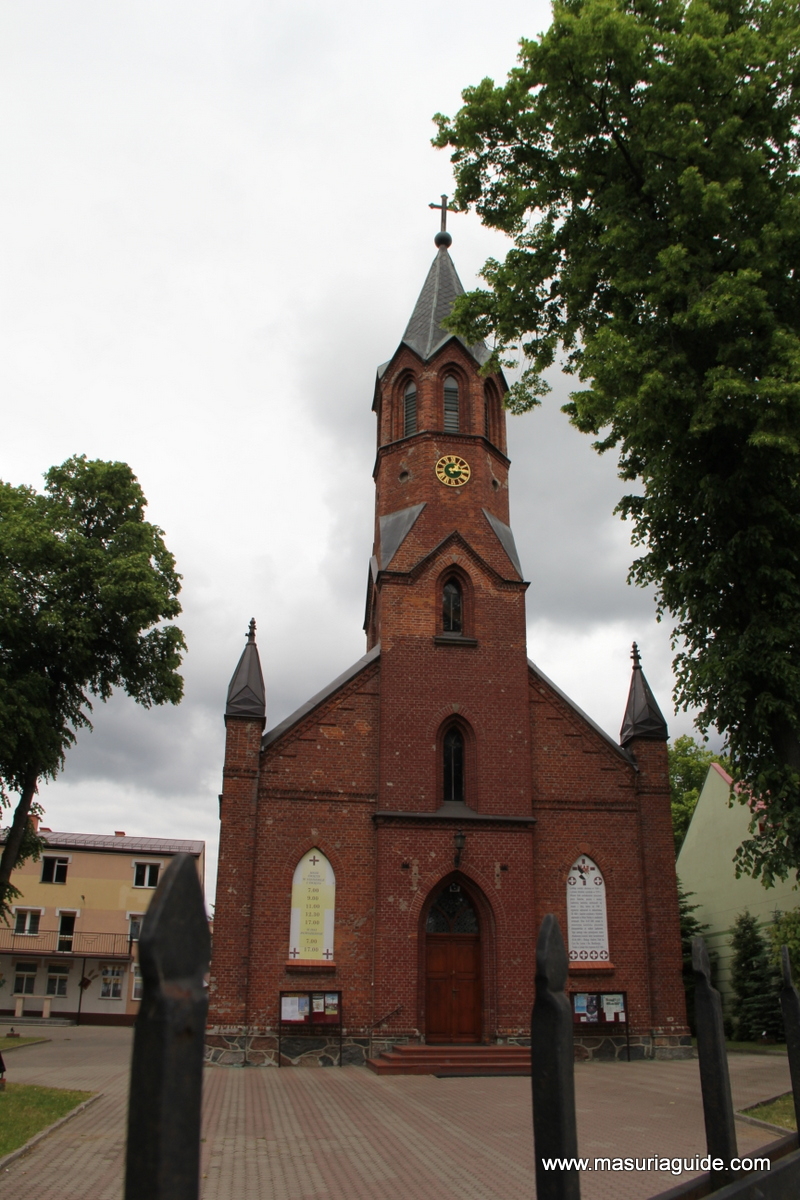
Kościół p. w. św. Leona w Gołdapi
This is one of the most important monuments worth seeing in Gołdap. It was built in 1894 in neo-gothic style. Visitors can admire distinctive exterior construction and impressive interiors of the Church. It has three wooden altars and interesting pulpit with a canopy.
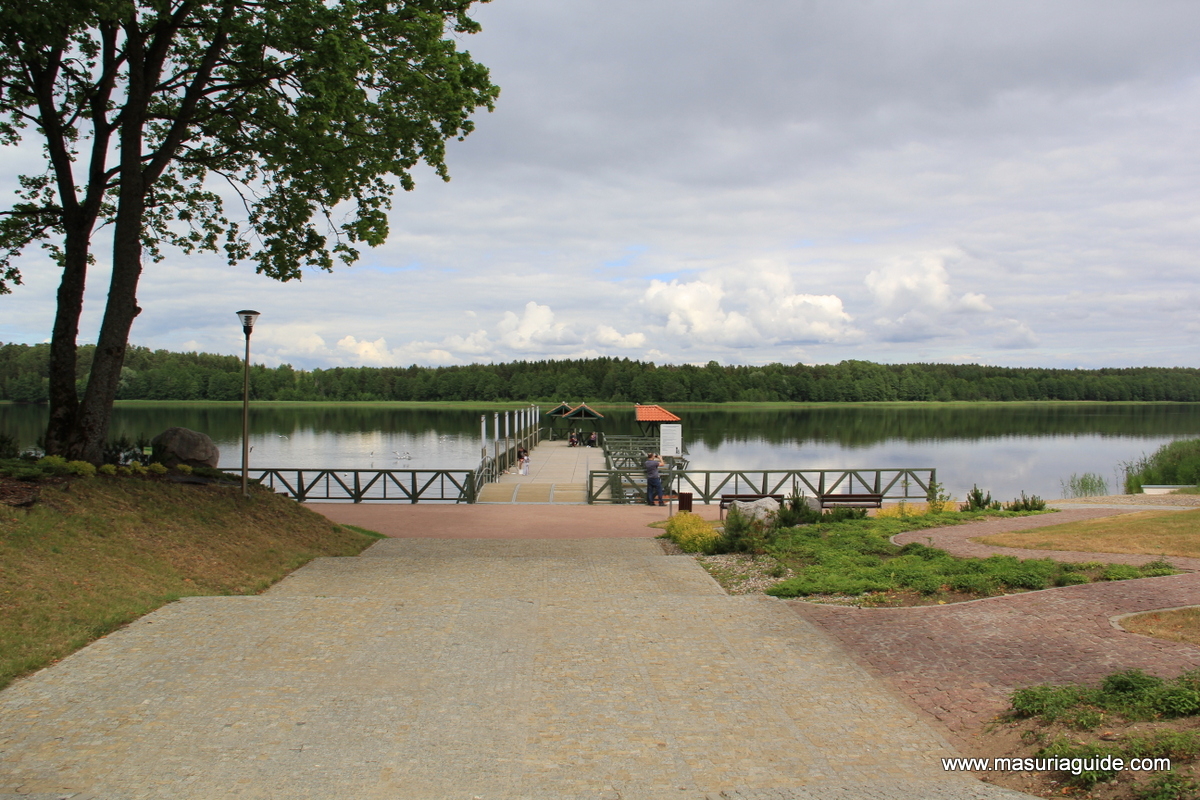
Jezioro Gołdap
Goldap lake - This is a border lake. On the polish side its area covers 234 hectares, making it the largest lake in Romnicka forest. Surroundings include beach town, recreational centers and numerous private accomodation. Here you can catch: pike, zander, bream, bream, roach, bleak.
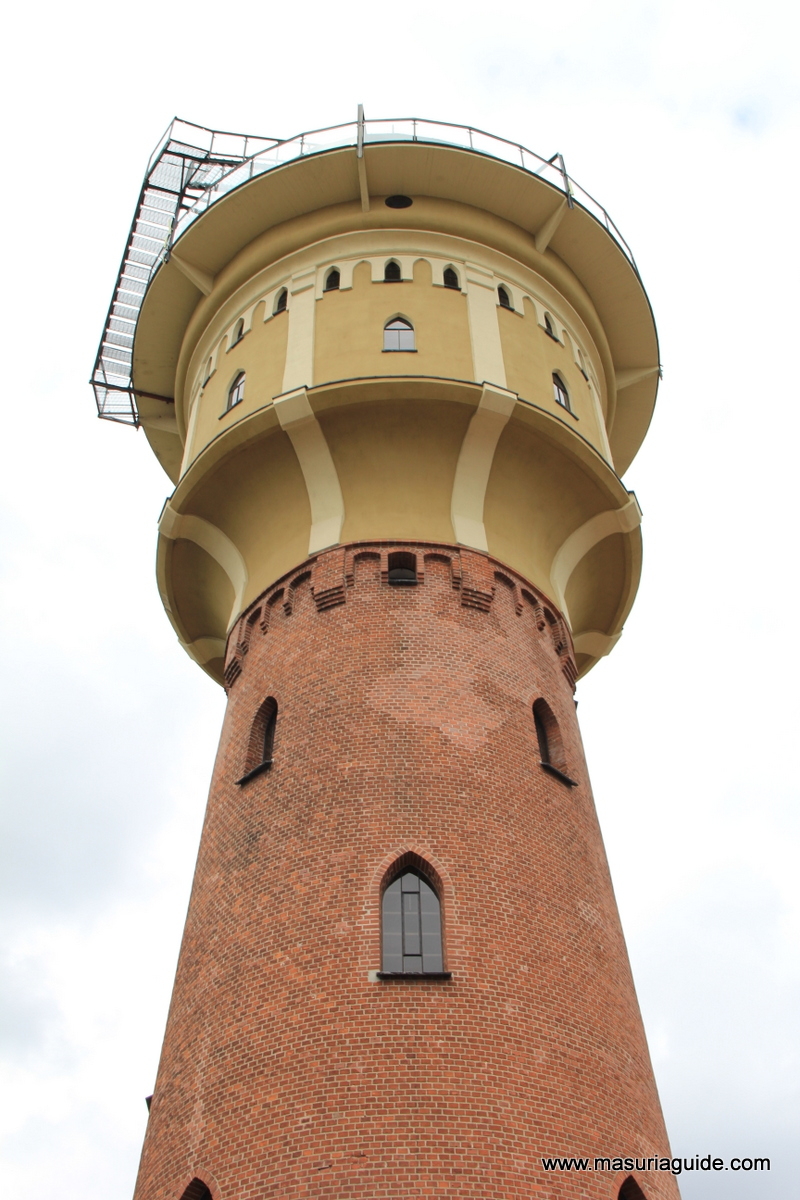
Wieża ciśnień w Gołdapi
The tower in Gołdap was built in 1905 and is one of just few historic buildings in Gołdap. For years, it bravely served as the main element of the municipal water supply. It supplied residents with water up to 1986, until a serious damage - a rupture to the tank. Since then it has been out of use. The height of tower is 46.5 meters and the tank inside has a content of 250 cubic meters. Currently, tower serves as a sightseeing point with a lovely café and a gift shop inside.

Pomnik Immanuela Kanta w Gołdapi
Immanuel Kant is an outstanding philosopher who lived in years 1724 - 1804. Throughout his life, he was associated with Królewiec, where he studied. He spent10 years in silence to create one of his well-known publication - "Critique of Pure Reason". It is said that he left his home place only once to visit Gołdap in 1775. At the commemoration of this visit, residents has put a statue, which is now a major tourist destination.
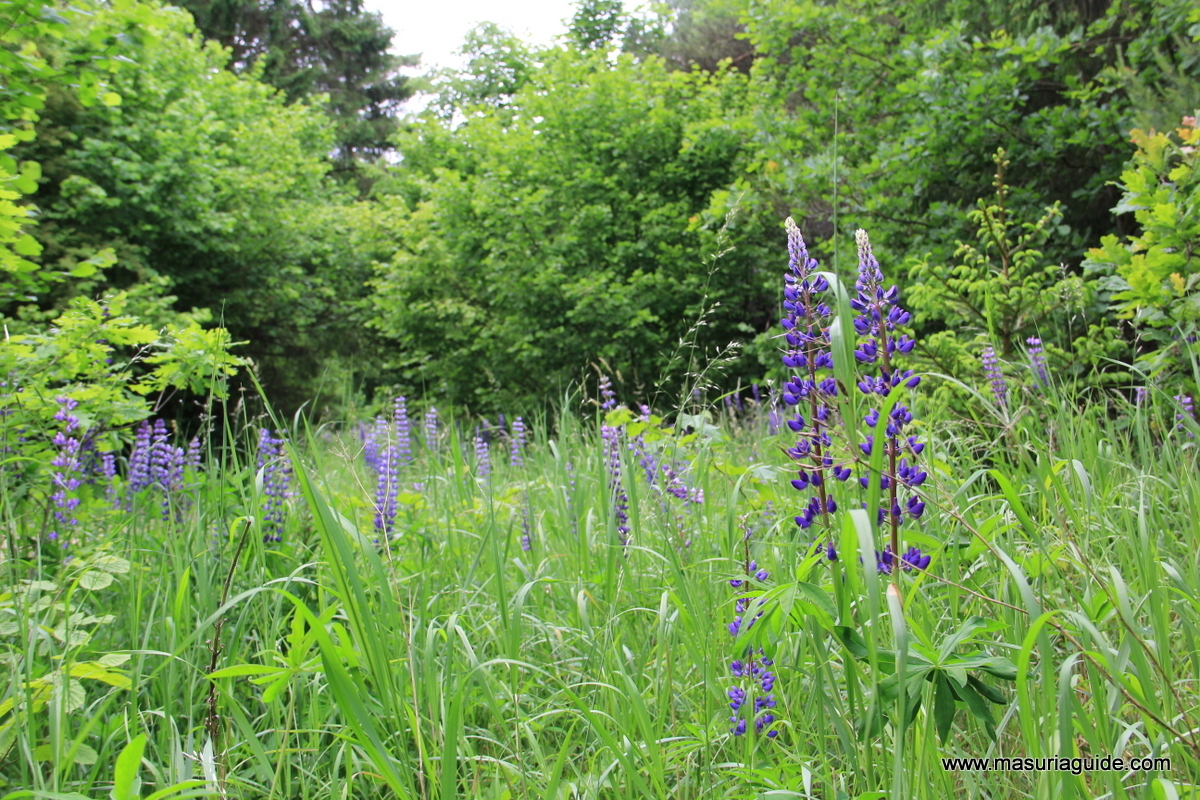
Puszcza Romnicka
This is a vast forest land partly based in Pojezierze Litewskie. Romincka Forest is characterized by a unique fauna and flora, resembling taiga. The main tree types growing here are pine and spruce, one can also see oaks, linden, birch and hornbeam. Majority of typical polish wild animals live here, except for bison. Typical ones are elk, deer, roe deer, wild boar, wolf, fox, lynx, badger, raccoon, otter, beaver and many more. The name of the forest is not known etymologically. It may come from the Prussian antonym "Roma" and perhaps also from Rominty.
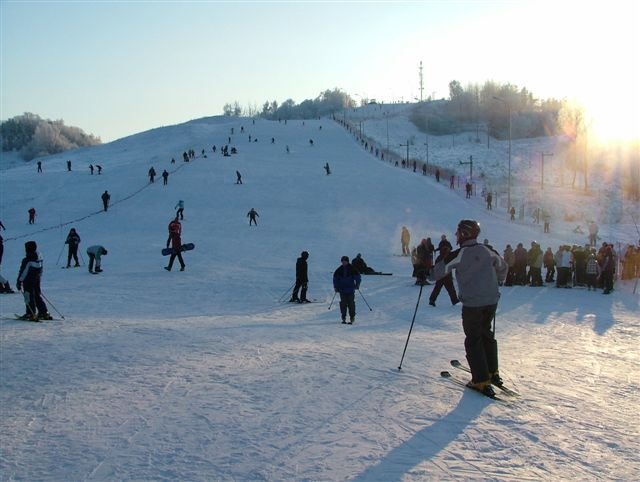
Piękna Góra
This is the highest point in the area reaching 272 m. The Mountain is a great attraction for sightseeing. It also plays an important role in sports and cultural life of the city. It is a destination place for many skiers. The mountain attracts tourists and athletes with its breathtaking views and a great skiing offer for all levels. From the top one can see the whole Romnicka Forest, Land of Węgorapa and Szeskie Hills.
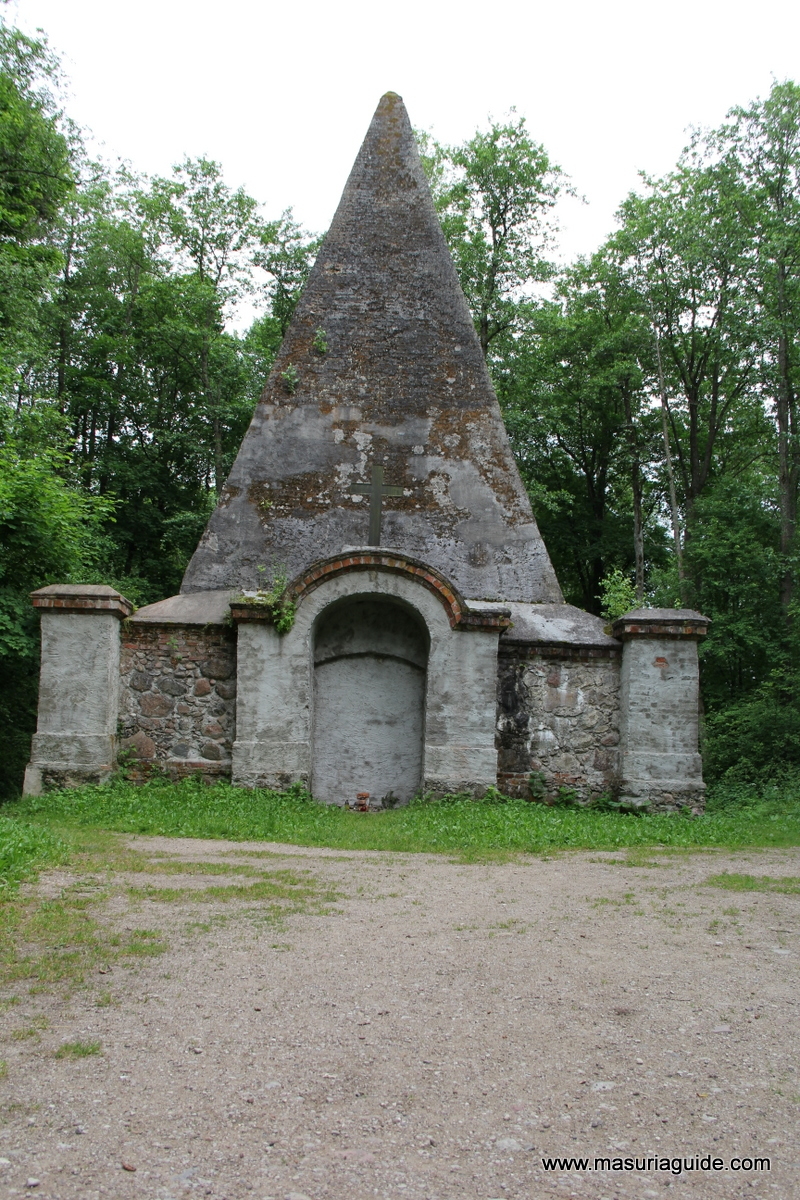
Piramida w Rapie
Pyramid in Rapa is a tomb of Farenheit family. In eighteenth century they bought the village called Angerapp from Christoph von Rap (this is where the current name of the village comes from). Family members were highly educated and traveled a lot. They were very interested in the matter of afterlife and decided to secure protection of their bodies after death. Hence, they constructed a tomb modeled on Egyptian pyramids. The designer of the building was Bartel Thorwaldsen. On top of that, according to some research, Farenheit pyramid was built in carefully chosen location. Apparently, it’s a place of positive energy radiation between earth and space. During the wars in 1914-1915 and in 1945, the tomb was destroyed and this is how we can see it today.
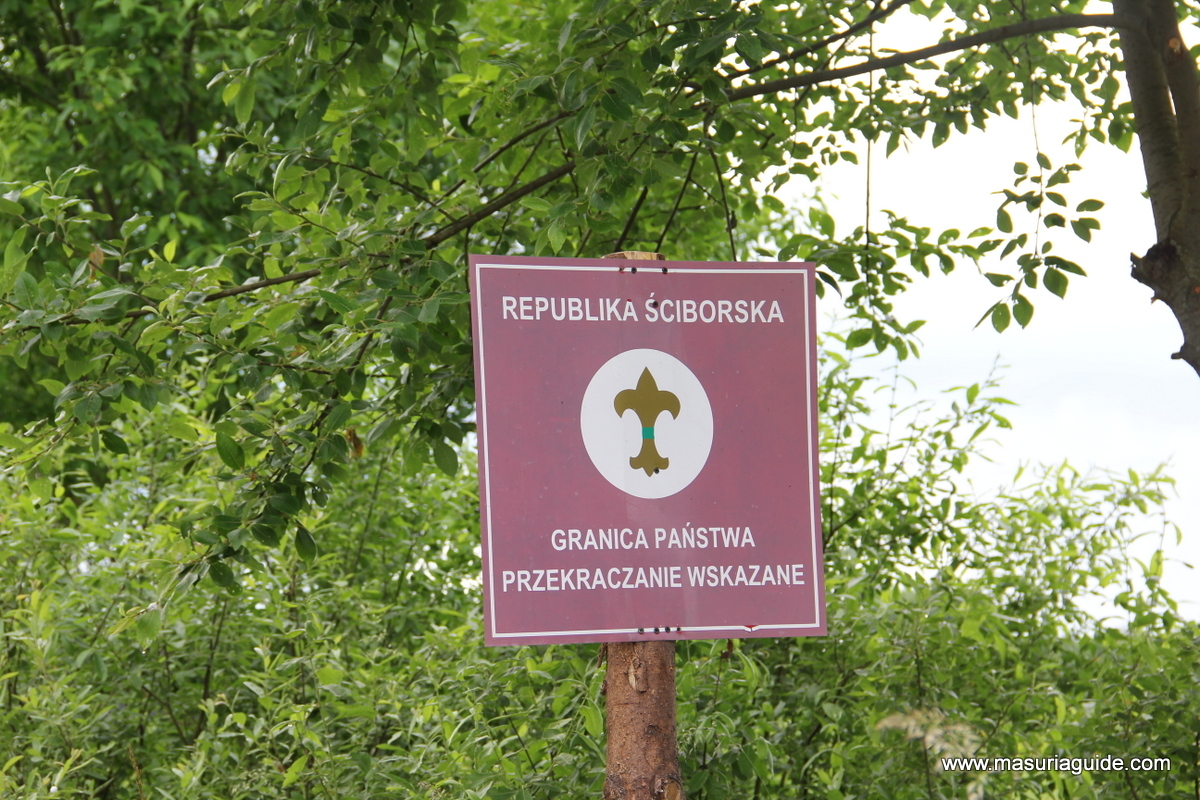
Ściborki – Eskimosi i Indianie
Ściborki is a very popular place for excursions. In the heart of the village there is a wooden house, which has approx. 200 years. Malamutes and husky are grown here. The creator - Dariusz Morsztyn is also known as a Running Wolf. Visitors have the opportunity to find out about the lives of Native Americans. Just one kilometer from Sciborki, on the forest edge one can admire some interesting exhibits and photo galleries referring to Indian and Eskimo culture.
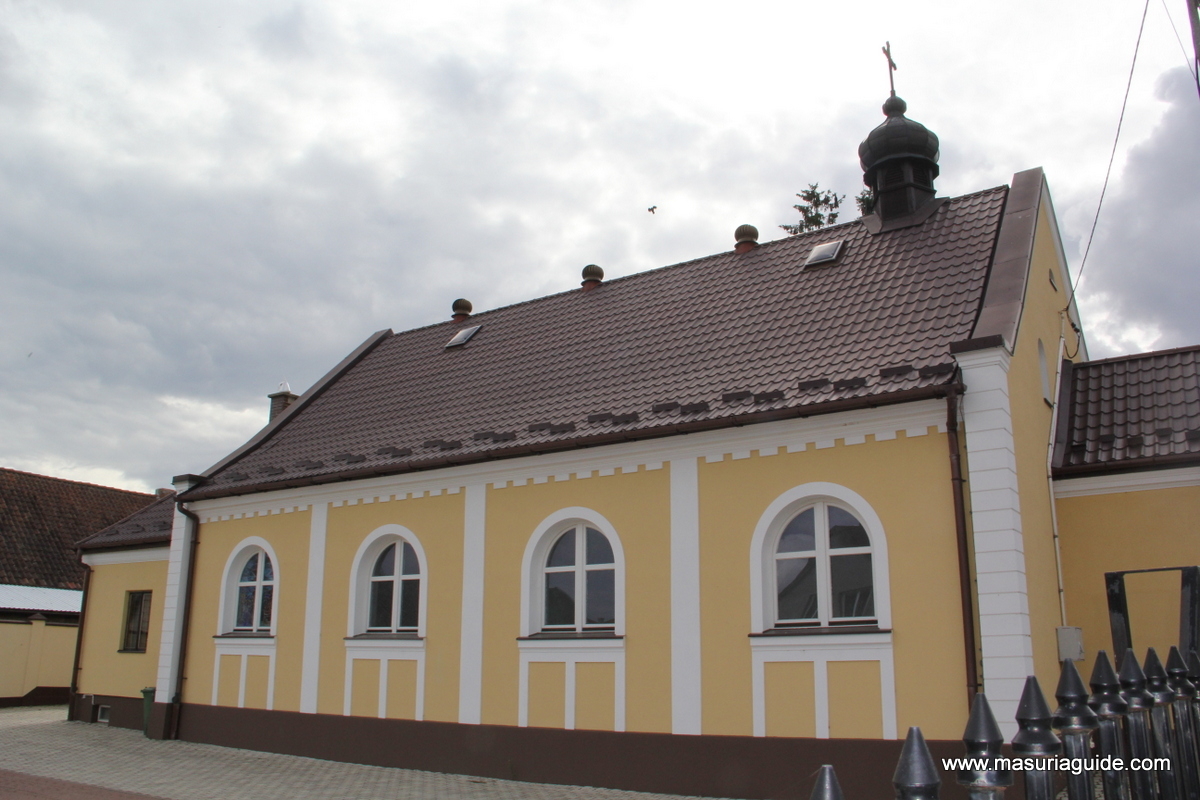
Cerkiew Bizantyjsko-Ukraińska w Baniach Mazurskich
There is a large group of Greek-Catholics living in Banie Mazurskie. They arrived here after the war as part of a resettlement action. Ukrainians for many years participated in the Roman Catholic church services as the eastern rite was forbidden. It was not until 1957 that the vicar father Eugene Uscki took care of the Greek Catholics and celebrated the Liturgy in two rites. The building is a unique monument and is now looked after by Basilian fathers.
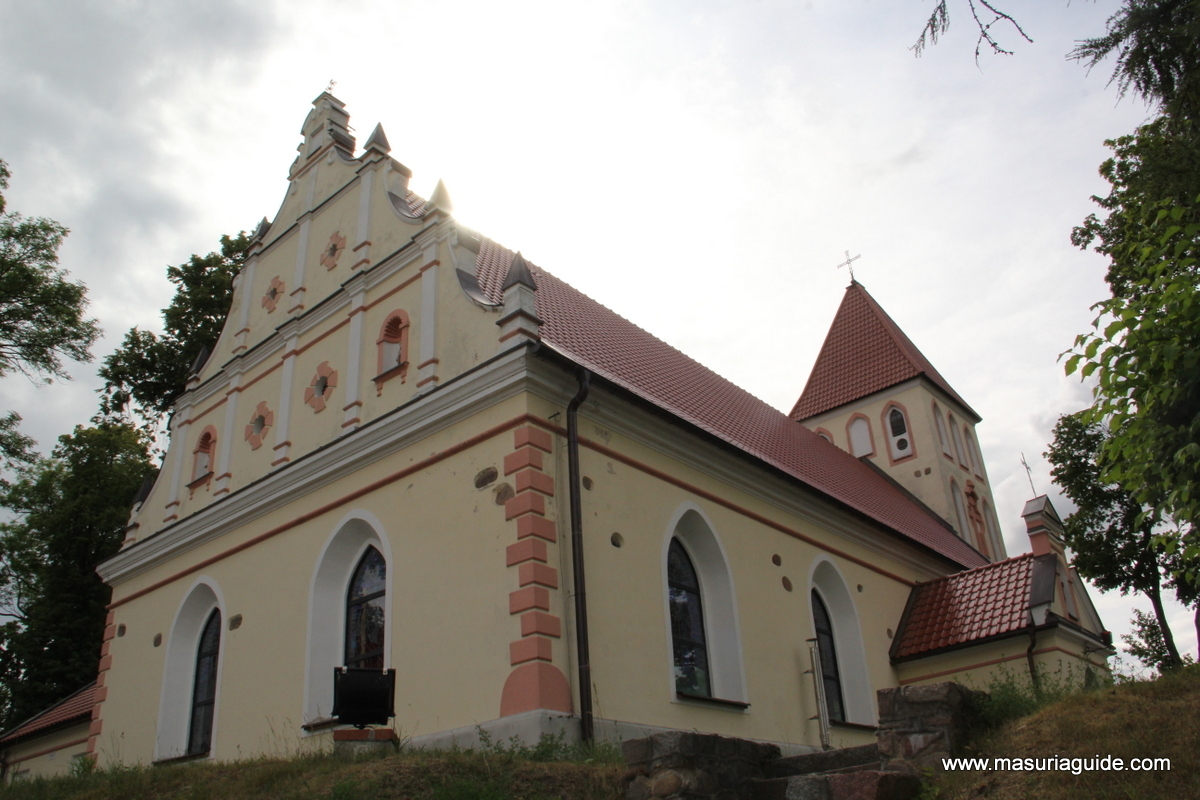
Kościół p. w. św. Antoniego Padewskiego w Baniach Mazurskich
It was raised from the ruins of old Evangelical church and canonically erected in 1962. A man probably named Banicz or Bania found the village and in 1566 began the construction of the church. During the Tatars invasions the whole village was burned down, only the church miraculously survived.
